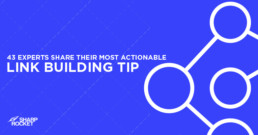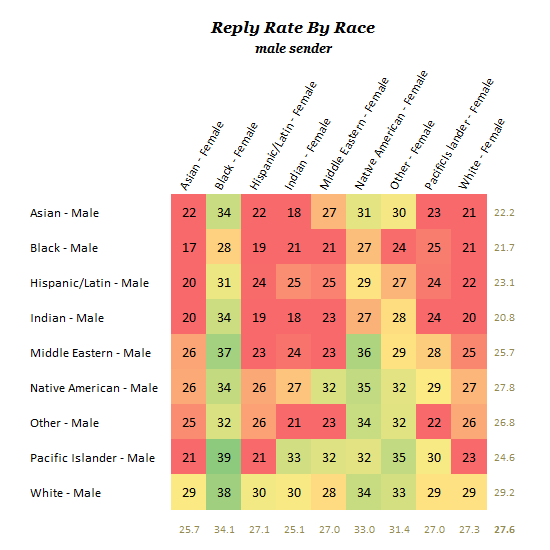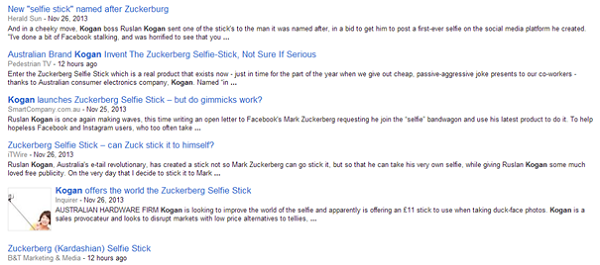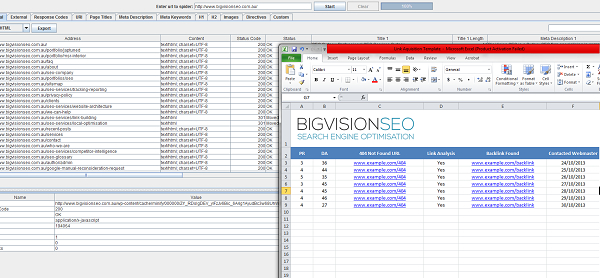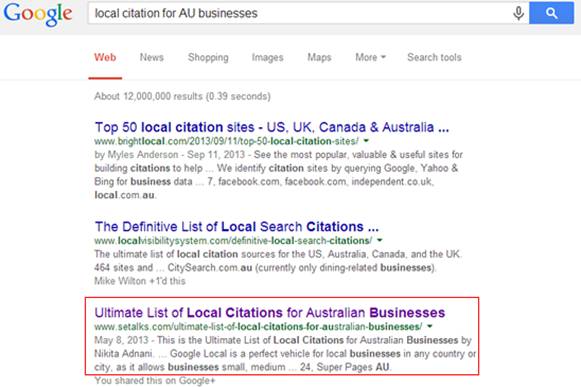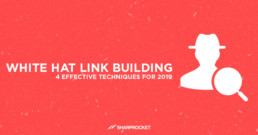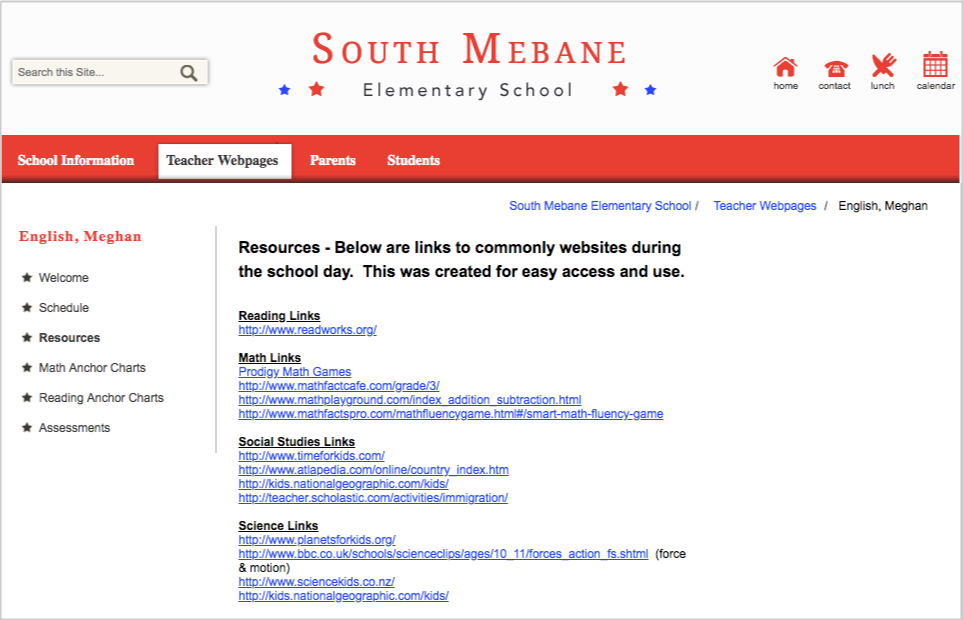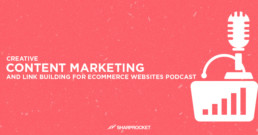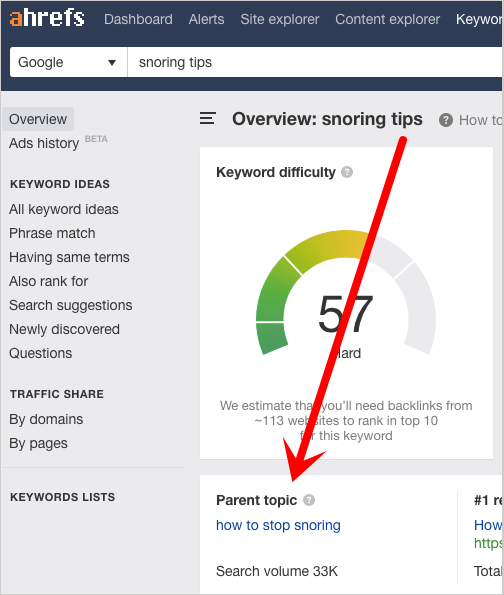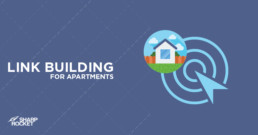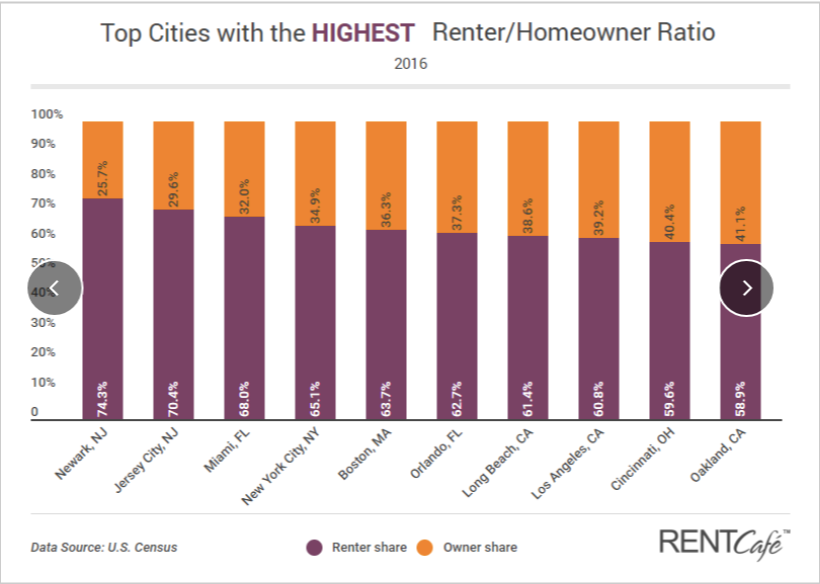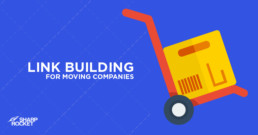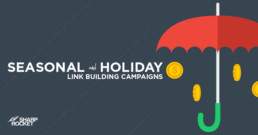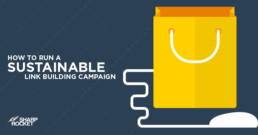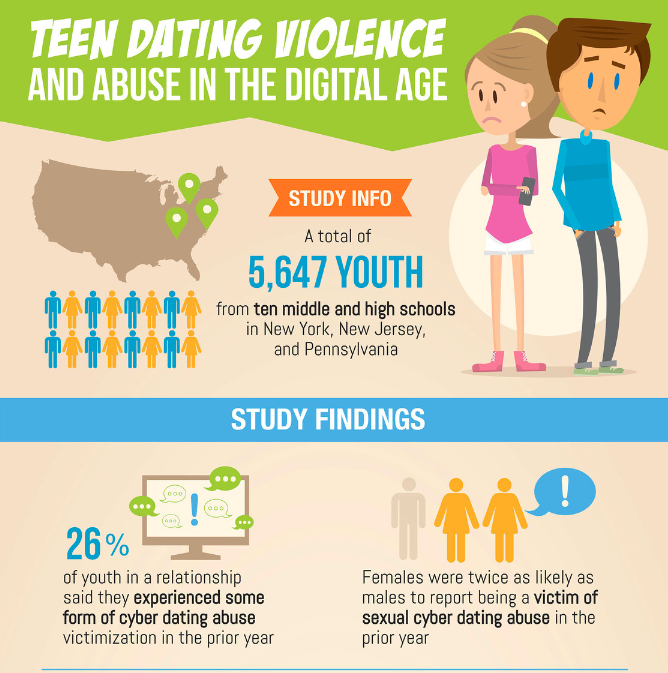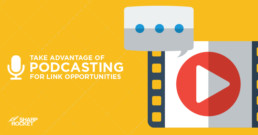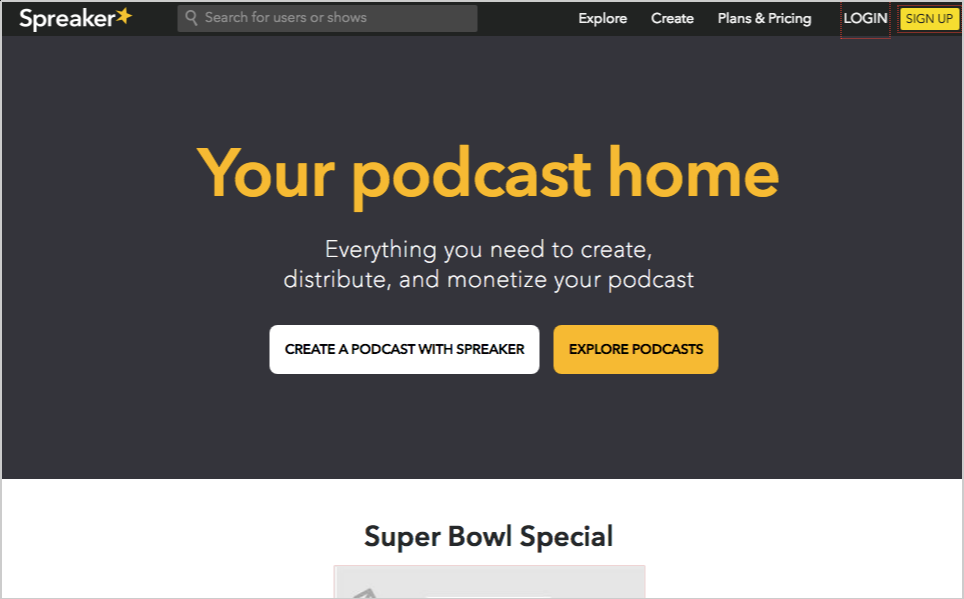43 Experts Share Their Most Actionable Link Building Tip
Link building is one of the essential and time-consuming activities in search marketing. It can help websites lift up their rankings in search results and can also enable brands to reach their business-related goals (i.e. increasing conversions through referral visits).
The approaches used in link building to target those goals vary depending on the type of industry the business belongs, the level of competition in the space, available resources that can be used by the online marketing team, and many other factors that can affect the success of a specific link building campaign.
To help us perform better in our link building tasks, here are the 43 link building experts who'll share to us their most actionable link building tips.
Link Building Tips from Top Link Building Experts
Experts have a lot of experience in the link building arena. Their mistakes and learnings would give us insights on how we can improve our link building campaigns. So let’s hear from them...
Here is the question that I sent to 43 link building experts.
“What is your most actionable link building tip?”
And below are their answers…
TL;DR
- Create Something Fun And Be Consistent
- Leverage Competitive Brand Mentions/Links
- Stop Reading About Link Building and Start Doing It
- Use Visual Assets to Build Links
- Build Links to Improve Domain Authority
- Look At The Engagement and Build the Right Relationship
- Seek More Linking Opportunities
- Create A Crazy Product
- Compare Backlink Data of Top Competitors With Your Own
- Get Testimonial Links
- Remain Compliant With Search Quality Guidelines
- Improve The Strategies You’ve Used In The Past
- Create Quality Evergreen Content
- Use Google Image Reverse Search for Image Link Buiding
- Use Preciprocation To Your Link Building Campaign
- Use New Products/Services/Features to Create A Healthy Link Profile
- Create Stuff That Will Resonate To Your Audience
- Build Relationships With Bloggers Through Guest Blogging
- Personalize Outreach Emails To Generic Email Addresses
- Go and Make Your Website A Great Experience
- Always Implement Strategic Planning In Your Link Building Campaign
- Get Links With Partnerships
- Don’t Ignore Broken Link Building and Link Reclamation
- Do a Groupon
- Take Advantage of Missing Image Attribution
- Cause Friction in your Market Place
- Link Out Generously
- Participate in Forums
- Reach Out to the Right People, About the Right Content
Create Something Fun And Be Consistent - Chris Dyson
With Hit Reach, we have been trying out lots of new ways to create content that will gain links naturally to our site. A lot of businesses I have worked with in the past are afraid to create content that's a little outside the box and does not fit within their corporate brand message, sadly 99.9999% of people on the internet couldn't care about your stuffy brand image and want to link to photos of cats or something fun.
Our biggest experiment of the past few months was to create some comic strips based around a fake digital agency "Digital Rockstars", at first it was difficult to come up with ideas but now they take very little effort to come up with as we produce them week in week out. The comics are released under a Creative Commons Attribution license so anyone can use them - all we ask for is that you credit us as the source.
So far we have published ~24 comics and earned links from places such as Ahrefs, Search Engine Land and various other marketing blogs with no outreach, except for sharing the new comics on social media.
According to Ahrefs, we have 130+ links to these comics...
I'm sure if I checked image raider or Google image search I would find a bunch of other sites who haven't linked and used our comics.
Initially, we only produced one comic per week but we're now publishing 2 comics per week due to the increasing popularity.
In 2014 we plan to create more topical comics relating to changes in the digital industry and hopefully re-purpose these comics into presentations at conferences and guest posts.
Leverage Competitive Brand Mentions/Links - Rand Fishkin, Sparktoro
The combination that I find most actionable and immediate for link building right now is leveraging competitive brand mentions/links and mentions of your own brand that haven't linked. I know it's self-serving, but for both of these, I love Fresh Web Explorer right now. I can do a query like this: "rand fishkin" -rd:moz.com and see a list of pages that have mentioned me, but failed to link to my site. Contacting them an asking for attribution is a great way to get a lot of high quality, editorial links.
Stop Reading About Link Building and Start Doing It - Nick Leroy
My most actionable link building tip is to stop reading about building links and to start DOING it. Reach out to bloggers/resources in your industry. Offer your time, resources or in some situations money to secure the best links in your industry. Also, make sure to pick up the "easy" links by scouring your competitors' backlinks. Get as many of the links that they have and then build even more!
Use Visual Assets to Build Links - Gregory Ciotti, Sparring Mind
Frankly, I'm in full agreement that 'visual assets' are the way to go with link building today. I've used animated video, such as my Science of Productivity video collaboration (1.2 million views) to build hundreds of links, and I've seen the same effect with other more static visual elements. The reason being, infographics take up a full post if someone wants to re-post it, but a small chart or illustration can be included in a longer piece to strengthen the author's point. I've seen the charts from places like the OKCupid blog passed around to literally thousands of people (via other blog posts and communities like Reddit). Think of opportunities to show people instead of telling people, and you'll be on your way to creating an image that's bound to get passed around. As an example, here was a highly controversial (and extremely popular) image from OKCupid on how your race affected your average response rate on their online dating platform:
Imagine trying to disperse that information with words alone: it wouldn't have worked nearly as well. That is where the power of visual assets lies, you needn't rely on a gaudy infographic to enhance a piece of information that people are likely to share.
Build Links to Improve Domain Authority - Jason Acidre, Avaris
"Instead of just giving you one actionable link building tip, I’ll share 22 (plus one) tips that our team has learned this past couple of years doing intensive link development campaigns.
These tips were originally published as a blog post here, but I thought of transforming the post into a slide deck to make it easier for the readers of this possibly gigantic crowdsourced post.
Look At The Engagement and Build the Right Relationship - Peter Attia
This question varies depending on the industry and its needs, but one that I’ve found to be pretty universal is to find a community to be a part of. I don’t necessarily agree with the whole “Build relationships, not links” movement, as it’s more about building the “right" relationship. For example, if you do a co-op post with someone who’s a leader in their industry, you’ll get noticed by thousands of people who are part of their community. This will give you the opportunity to get way more links, as it also gains your trust. People who see an industry leader trusts you, are more likely to trust you themselves.
I think that’s important to keep in mind when looking for new blogs to build links to as well. Instead of making sure your link is put on a site with a certain MozRank or a minimum number of backlinks, look at the engagement. A blog that gets a hundred comments on every post has more potential than a blog with good backlink stats. There’s a chance to build new relationships, get real conversions, build your brand awareness, and show real engagement through social media.
Plus, a blog with a large audience will likely get better stats in the near future. It’s always easier to get a link on a blog before they realize how valuable they actually are. And again, if you’re part of a popular community early on, you’ll instantly be trusted by any newcomers to that community.
Seek more linking opportunities - Venchito Tampon, SharpRocket
The most common scenario when doing link building is to find a page that is primarily targeting the goal of the campaign. For instance, you have a great resource on your site (e.g. ultimate guide to...) and you want to build several links to it. Usually, you will use the advanced search operators to find resource pages that are linking out the same type of content that you have (resource type). Then use the Link Miner to find broken links on the page and list down any defunct link in the spreadsheet (if you see one).
And it ends there...
Now, you have to take another route. Instead of only aiming for one link (link from the resource page), you may also want to seek for more linking opportunities from the site. Visit its blog section. Determine if the webmaster provides guest posting opportunity to its community (simply using this advanced query: site:domain.com "guest post" OR "write for us"). Check also if the site has a sponsorship page with external links to sponsors' websites. If you have a small budget for this, you might want to contact the webmaster and sponsor a physical product or money instead.
Why this strategy works?
- The more you see linking opportunities from one website, the more you engage with the webmaster. The higher the engagement, the stronger is the relationship that you build with the person.
- It semi-automates your content promotion activity. Given that you've built strong relationships with a few people, they can easily help you market your brand/content (this is good especially if they have a large number of social followers and/or brand advocates).
- Followers of your prospect site can remember your brand (since your content is always being linked out to by the site owner).
Link building should be strategic in any way. You have to be creative when seeking for more linking opportunities from one website.
Create A Crazy Product - James Norquay, Prosperity Media
To gain great links in today’s market you need to be creative. At the end of the day, it is not just about links you also need to think about brand mentions, traffic, and sales. One of the most actionable ways you can build links to a website is by creating a buzz with your brand by selling a silly product. It can be real or fake with the idea of building links in mind. One brand which does this VERY well is an Australian brand called Kogan.
In the last week, Kogan launched a new product called “The ZukerbergSelfie Stick” see product below (you can actually buy this product)

The interesting thing about this product is that big news websites have picked it up and most have linked back to the brand website or product page. In total around 26 news websites have linked back.
Example of links they have gained from this product launch:

Now Kogan is not the only brand playing around with this type of strategy to gain links, PR and brand mentions. Another company Power House Fitness in the UK have also ran campaigns where they launch silly products, I have written about this company in the past on my blog to show the types of strategies they use to gain links –
So that is my tip.. build something different for your brand with an aim on generating buzz, PR and links.
Compare Backlink Data of Top Competitors With Your Own - Harris Schachter
One thing I like to do which is not only actionable but also a key first step in any campaign is to compare backlink data of top competitors with your own. Using link building tools of choice, grab the data on your competitors for your target anchor category (i.e. not a single exact match term but rather a group of variants which I call an anchor category). Put this competitive data in a spreadsheet alongside your own for the same anchor category and pivot to find sites linking to competitors but not you. If you find domains linking to more than one competitor, chances are good that you can get one too.
Get Testimonial Links - Benjamin Beck
Think of the services you appreciate and use. Check to see if they have a testimonial page that links out. If they do, offer your testimony to be added to their page. Please only give testimonials for companies that you actually use and can positively review.
Convert Non-Linking Brand Mentions Into Links - Simon Person, Zazzle Media
Right now we are getting a lot of traction tracking web mentions and then following up on non-linking brand mentions or mentions of the expertise for which our client is famous for. With some good PR follow up you can usually convert that into a 'link' and add some extra value to the piece they have written, so everyone wins.
We do this using two key tools - Social Mention and Fresh Web Explorer by Moz. We will set up a brand and 'expertise' mentions and monitor this daily to ensure our PR team can jump on it while it is still relevant and fresh in the mind of the writer.
Remain Compliant With Search Quality Guidelines - Chris Ainsworth
If you’re talking at a beginner level then my must actionable link building tip would be to ensure you remain compliant with search quality guidelines. Google especially are continually evolving their perception of links and refining guidelines accordingly; so ensuring you do not participate in schemes which breach search quality guidelines would obviously be my first point of call. Following that, I’d recommend investigating areas in which links can be acquired quickly and relatively easily. Businesses can often leverage valuable links from suppliers or partners which often get overlooked by other, arguably more advanced, techniques such as guest posting. Always start with the basics!
Improve The Strategies You’ve Used In The Past - Wiep Knol
Take a good look at your current link profile and pay close attention to both your best (as in high quality) incoming links and your most popular pages. Try to analyze *how* you got these links. Was it a specific contact, was it highly targeted content, just plain luck, or something else? Learn from your own successes, improve the strategies you’ve used in the past and try to get even better results as the last time. You don’t have to invent the wheel twice, just make sure you keep improving it.
If you’re starting from scratch, you can also take a look at the most linked-to content of your competitors for some content- or strategy inspiration. However, since you’re missing a part of the picture, fully analyzing the processes and critical success factors isn’t possible. But it can still be fun to do.
Create Quality Evergreen Content - Garrett French, Citation Labs
My tip is simple: create quality, evergreen content to pave the way for effective, meaningful outreach and the highest possible quality links.
That said, "quality content" is always a moving target and differs from vertical to vertical. Each vertical has its perennially important topics and you have to drill down into these - and investigate their linkers - to be sure that you're creating something that's going to perform well at the outreach phase.
Also complicating the "quality content" issue, the content you are capable of creating will differ if you're operating as an agency or as part of an in-house team. Inhouse you will have far more access to internal knowledge resources and will know the ins and outs of getting something published on your website. Agencies will have more trouble mining out all that internal expertise but are likely able to get content done more quickly... plus have an innate sense of what will or won't incent links.
So within my tip to create great content (yes it's a tired old tip) there lies an important, under-discussed reality. Each vertical has distinct linkers - sometimes its link list curators, sometimes news bloggers and sometimes both. Each vertical has its distinct "evergreen topics" that, if created well, will always earn links. Know your linkers. Know your vertical's key topics. Then you'll never have trouble building links.
Use Google Image Reverse Search for Image Link Buiding - Paddy Moogan, Aira
I'd recommend using Google image reverse search to look for websites that have used your images, logo or pictures of your staff on their websites but haven't linked to you. Then you can reach out to them and ask for a link because they've used your images.
Use Preciprocation To Your Link Building Campaign - Brett Snyder, Nebo
When we talk about actionable link building tips, I actually prefer to keep things simple and make sure that the tips are truly actionable for marketers regardless of experience or size of the client. That said, my most actionable tip is actually something that was written about a lot probably 3-4 years ago and that is the concept of preciprocation. You may very well be familiar with this but this can apply to any link building campaign, at any budget, in any industry. To summarize, preciprocation means identifying your desired link partners (the people you think will be interested in linking to you) and getting buy-in from those link partners before you have an asset that you're trying to get links for. This strategy can take many forms, depending on the asset. For example:
- You're running a campaign to raise awareness about an event, reach out to people who participated in similar events in the past and find out what they liked/would have done differently with those events
- You're creating a content asset, identify subject-matter experts in the field and see if they would be interested in collaborating on the asset
- You're publishing a research-focused piece, reach out to the sources you're using and ask if they have anything to add beyond what you found in their original source
The key premise here is that you want to build a relationship and offer something to these potential link partners to get them invested in your campaign. The goal here is not even to get links, it's to get them invested. Once you have someone personally invested, they are much more likely to do what you ultimately want (link to it, share it via social, etc.) but you're not simply using them to promote your asset. Everyone in SEO talks about relationship-building as the key element to link building, this preciprocation approach simply pushes that relationship-building aspect to the very front of the process and lets you stay flexible to fit your asset around that relationship (instead of the other way around).
I know this is a very long response so if you feel it adds value please feel free to edit as you see fit. If there's anything else you need from me you now have my direct email so please don't hesitate to reach out anytime.
Find What Links Your Competitors Have That Your Could Potentially Acquire - Geoff Kenyon
If you are working on promoting a new product or brand, Moz's Link Intersect is a great tool. The Competitive Link Finder is really helpful for finding what links your competitors have that you could potentially acquire. It's really easy to use too; you just put in your domain and some competitors and Moz will use their OSE data to see what links multiple competitors have and gives you a report. The Link Acquisition Assistant automates 121 different queries to help you find links - a lot of these results aren't the highest quality (such as directory sites), but you can usually find some good ones here.
Use New Products/Services/Features to Create A Healthy Link Profile - Carrie Hill, Ignitor Digital
Links now are about more than just a website linking to your website. They're about content and context. We encourage our clients to use new products, services, features, and even community events to create a healthy and sustainable link profile.
If you're a doctor, providing free flu shots to teachers in your school district, or holding a health clinic for a large company's employees can get you some good press, and some great links.
If you're a computer repair firm, work with local non-profits and churches to keep their equipment up to date and working well. Establish a great relationship and offer great service, then ask for a link from their website. You can also do this with area private or charter schools as well.
Create Stuff That Will Resonate To Your Audience - Gianluca Fiorelli, iLoveSEO
The best thing is creating stuff that will resonate with our audience and have it promoted by someone who has a clear influence on them.
In order to find the most potentially viral idea for content, I usually simulate a Facebook ads, indicate as main interest the one related to my site and analyze others interests my targeted audience have... and create the content based over the most "short-circuited" interests, using the "random affinities" principle Ian Lurie explained very well in many of his posts and speeches.
For instance, a site sell insurances and its targeted demography are interested also in Star Trek? Hence, why not creating a fake product "Starfleet Spaceships Insurance"?
Better if we are able to involve the Star Trek official website in this operation from the beginning, because they have a huge follower base and community, so that when we launch the campaign we can have the biggest social echo and, from there, earning also links but, especially, brand visibility and organic traffic.
That's the kind of tactic I suggest, and it can be replicated in almost every niche and case.
But what I care the most are not the links (well, they are obviously welcome), but the organic traffic those links may generate.
That's what I consider safe link building.
Build Relationships With Bloggers Through Guest Blogging - Miguel Salcido
Honestly, the most actionable thing that a business owner can do to gain powerful links is to guest blog. Authentically. Use a real name and face and connect with bloggers in your niche and build relationships with them. Real relationships. Invite them to post on your site too! This is also a great way to gain access to other relevant audiences. It's difficult to do for direct competitors so look to build relationships with products and services that compliment or are parallel to yours. For instance, if you run a local cleaning services company, connect with local real estate agents and local business organizations (for commercial cleaning).
Run An Analysis of Competing Websites - Daniel Law
This strategy is one of my personal favorites and all credit goes to Paddy Moogan who works at Aira.
Using Screaming Frog, run an analysis of competing websites and jot down a list of all their 404 Not Found pages. Depending on how well their website is maintained they might actually not have many 404s, but more than likely you're bound to come by a few.
Once you've compiled your list, run through the 404 Not Founds through a backlink checker. I recommend using Ahrefs as their index is updated the most frequent. Scan through the list of backlinks and drop an email to the webmasters of each domain kindly notifying them that they're linking out to a broken page. Kindly suggest another HQ and relevant piece of content (preferably your own) to take its place.
This is a great strategy in building quality links as well as assisting fellow webmasters quality control their own sites.
Personalize Outreach Emails To Generic Email Addresses - Brian Dean, Backlinko
My most actionable link building tip is to personalize outreach emails to generic email addresses.
Let me explain:
If you do a lot of email outreach you'll ultimately have to send at least some of your pitches to generic
emails (or even worse) contact forms.
Because this is the equivalent of sending your message into a black hole, many SEOs skip over these targets and move onto one where they can send a message directly to the recipient.
But to me, that's a huge mistake.
What I do is send me a message to the generic email as if it's to a specific person.
So if I know Jane runs a page or writing an article -- but can't find her email address -- I'll send a message to support@example.com like this:
Hi Jane,
Just wanted to say that I loved your latest article about X.
However, I did find a few broken links...
Yadda, yadda, yadda.
Cheers,
Brian
When you look at it from the person who reads those support@example.com emails, that's an email that he or she feels compelled to forward to Jane (in fact, it's their job to forward that message).. But sending a message that says something like "can you please forward this to the right person" is going to get deleted instantly.
Go and Make Your Website A Great Experience - Alessio Madeyski, Digital Hothouse
Go and make your website a great experience, tell a story every day, every week. Mention other websites, other companies (maybe not competitors) and then collaborate with them. Do something for someone. For example, we all need schools to suck. Why companies are not spending money (and sometimes you just need to go to a school near your HQ) to inform and do workshops with students? Like: you are a plumber. WOW! Why you don't go to schools and university teaching some tricks about plumbing?
I guess what I wanna say is: don't do anything on your website just for having links. Do it because you like it and enjoy it, and if you want links, well...they will arrive. The best time I have these days is with a tourism-related company that has a section on their website where they are telling stories mentioning museums, libraries, and spots to see. There you can contact for example the museum mentioned saying: hey, we mentioned you as a must-see during our journey to wherever!. But I'm doing it because I think it's a great idea, and the museum should be happy. If the museum is gonna give me a link back, all the better.
We need to focus a bit more on the beauty of doing things. Otherwise, everything is much more difficult.
Always Implement Strategic Planning In Your Link Building Campaign - Bill Sebald, Greenlane SEO
My best tip for link building is to schedule a block of time to sit down (possibly with your team), take inventory on what your client or business has of value (whether it’s an asset, service, or product), and think about what different types of audience could really care about it. Then think about the tactics you have at your disposal. This is where you start if you want not only links that help your SEO, but links that can send qualified traffic. I think sometimes we go in headstrong with just tactics and don’t do the required upfront work to really make each and every outreach more valuable. Basically, my most valuable link building tip is “strategic planning.”
Reverse Engineer Your Competitor’s Backlink Profiles - Rohit Palit, Techtage
My most actionable link building tip would be reverse-engineering competitors' backlink profiles. There are many backlink checkers out there, but Ahrefs pretty much blows the competition out of the water. You can never rely on a free service for a serious backlink reverse-engineering campaign, so I'd recommend at least Ahref's professional plan which costs $79/mo. It might sound a bit high, but the ROI definitely makes up for the expense.
What I tend to do with most of my campaigns is:
1. Find and identify sites within a particular niche that are performing very well in Google.
2. Explore their link profiles using Ahrefs.
3. Come up with a list of referring domains and referring pages that I might have a chance of getting a link from.
4. Do what I'm supposed to do, trying to replicate those links for my own site. For example, manual email outreach, guest post submission, relationship building, etc.
I only choose targets that I know will be very likely to link to my site because they usually link to similar ones. I make sure that my own site has content pieces that stand out from the competition, so it's a lot easier to attract links to them.
And this tactic didn't only give me a dozen cold links, I also got to know a few people with whom I still maintain a good level of professional relationship because of Ahrefs. Seriously, there are endless possibilities once you start looking through referring domains of a site on Ahrefs. It opens up a whole new world in front of your eyes. Think about a parallel (to search engines) system to find more new and interesting sites on the inter-webs.
Though it varies from campaign to campaign, I get around 25-50% success rates, so you can consider this strategy bang for both buck and time.
Leverage Guest Blogging To Build Relationships and Earn Links
I wish I could say "guest blogging" but I advocate against approaching guest blogging as a link building tactic. Guest blogging is good for building relationships and seeing links coming from that as a result, not vice versa. So I guess I don't know any "actionable" ways. I talked about that at Pubcon Vegas, so you can see my way here:
Identify Your Online Assets That Are Link Worthy - Tony Dimmock
Before hunting for links, ask yourself: “What online assets do I have (or need to create) that would be link-worthy?”
In my experience, many businesses fail before they even begin link acquisition campaigns, because they don’t take the time to understand what is “valuable” in the eyes of their website visitors and target audience.
To avoid this happening to your business, answering the questions below will reveal the “who”, “what” and “where” of your online asset strategy:
1) Who is your target demographic?
- Think about the age range, financial status, typical mindset, education and what “floats their boat”
- What are their needs, personally and professionally? Think about the problems or challenges you help them overcome
- Why do people buy from you? Asking or surveying your audience is a great way to find out what they think about you and what you offer
- What information is important to them? Finding this out will help you create content that entices them to link to (and share) your content
2) What content can you create, that doesn’t currently exist?
The opportunities to connect with your audience in your field are endless. To show your authority in your niche, could you create any of these?
- First-of-its-kind industry whitepapers that explore hot topics that no-one else approaches
- Embeddable widgets, videos or tools that solve a problem many face daily
- Real-life accounts of how existing customers used “x” to reduce “y” and gain “z”
- Competitions with prizes that entice users to share creative ways they used your products or services
- Interviews with market influencers or thought leaders that offer new perspectives or ideas
3) Where can you find influencers that will link to or share your assets?
Online and offline, try approaching these:
- Industry trade associations that your assets connect with, that provide value to their members
- Event organizers that run meet-ups where your target audience discuss topics relevant to your assets
- Journal and magazine editors who run seasonal features that your assets offer new perspectives on
- Subject-matter bloggers who research and write about topics within your niche
- Journalists who search for news, views and opinion contributors
Get Links With Partnerships - Steve Morgan
I work with quite a few small local businesses who may be long-established but are completely new to marketing themselves online. One method that I always prioritize is whether they have any accreditations or belong to any associations, as often it can be very easy to get a link and they're often authoritative websites. For example, I work with an IT support company that partnered with Microsoft (DA100), Cisco (DA98), CompTIA (DA83), Dell (DA94) and HP (DA96), some of which allow their partners to have a profile with a link. My client had done some of them but not others, so it was a no-brainer to look into doing these first.
Leverage Your Content to Build Links - Larry Kim, Wordstream
I wrote up my most actionable SEO tips as case studies, here:
We’ve used these basic strategies to get hundreds of thousands of links in the last few years, no kidding!
Don’t Ignore Broken Link Building and Link Reclamation - Steve Morgan
My most actionable link building tip is simple: don't ignore broken link building and link reclamation.
Both of these techniques are very successful, but for whatever reason, a lot of sites completely ignore them in favor of "sexier" approaches that are much less efficient.
Broken Link Building
This link building technique is typically a 3-step process:
-
- Identify pages that have broken links (i.e., links to other pages that are no longer accessible).
- Find contact information for the webmasters responsible for maintaining those pages.
- Contact those webmasters, and suggest alternative resources to replace the broken links (ideally, your page will be one of the suggested alternatives).
Not surprisingly, each of these steps can be optimized to improve the overall effectiveness of this technique. For example, you can use tools such as Ahrefs' Broken Link Feature to streamline the page identification process, and you can quickly identify contact information using tools such as BuzzStream and Pitchbox.
For even more information about effective broken link building, here are two incredible resources:
- The No Non-Sense Guide to Broken Link Building
- The Broken Link Building Bible
- 52 Broken Link Building Resources
Once you've mastered the basics of broken link building, you can improve the technique by adding one more step. Specifically, once you've identified a broken link (see step 1 above), make a note of the broken URL. Then, find all of that broken URL's backlinks, and contact the webmasters for each of those linking pages. Boom... broken link building on steroids!
Link Reclamation
This link building technique is all about taking advantage of situations where your site should already be receiving a link. These situations arise for various reasons, but the most common scenarios include the following:
-
- Unlinked brand mentions - When someone mentions your company, your employees, your social profiles, or anything else associated with your brand, it's an opportunity to secure an easy link (most people will gladly throw a link your way if they've already mentioned you).
- Broken links to your site - One of the easiest ways to lose link equity is to remove a page from your site (and not properly redirect the page's URL to an accessible resource) because it nullifies that page's backlinks.
- Improperly attributed resources - If people are referencing your site's resources (e.g., graphics, presentations, results, etc.) without properly attributing you as the creator, that is a giant link building opportunity.
To learn more about link reclamation opportunities, I encourage you to watch Ross Hudgens's video on the topic:
Do a Groupon - Andrew Shotland
I imagine several respondents went with the "do something worth linking to" or the "go for the low-hanging fruit (e.g. links from partners, etc.)" angles which I agree with completely. So I'll offer up the Purple Cow strategy in the interest of trying to make this not just another list of SEO experts advise on link building:
Do a Groupon. Groupon deals get syndicated all over the Web and create thousands of decent inbound links that really work. And if you can figure out how to run a Groupon deal for break-even or even at a small loss, you basically get the links for free. And if you can figure out how to do it at a profit, you have an amazing new source of revenue. See it here... #EasyPeazyLemonySqueezy
Take Advantage of Missing Image Attribution - AJ Kohn, Blind Five Year Old
Most actionable? I suppose that means the type of activity that is easy to perform and gets results? For me, that would mean missing image attribution.
Look at the images a client has produced and do a search by image on each one using this Chrome extension and look for sites that are using images but not providing any attribution.
Simply drop them a quick email thanking them for using the image but asking if they could provide the proper attribution. Most people are a bit red-faced to get 'caught' in this way and will quickly provide attribution.
Replicate Your Competitor’s Backlink Profile - Matthew Woodward
The one link building tactic that has stood the test of time & algorithms is replicating your competitor's backlink profile. I have written about it on my blog that will guide you through it step by step. I'll also be releasing my private SEO tool for free to my blog subscribers on the 12th of December that will help speed up the process of replicating your competitor's backlink profiles and rankings with ease.
Look At Your Network of Partners and Earn Links - Bob Jones, Visible
One of the most actionable link building tips I can give you is to look at the client's network of partners, suppliers, and manufacturers. We all know Google is about relevancy and endorsements coming from connected 3rd parties such as these are highly relevant.
Forget about the page's PageRank. Forget about the site's Alexa rank. Ignore the number of backlinks one of those sites might have (although make sure they're in a good linking neighborhood). All you need to look at is the relevancy and the relationship between the two.
Once you've listed all the applicable sites, simply reach out to them, preferably with an email address from the site you're link building for and even CC in the person in the company that might have direct contact with the other company.
Chances are you'll find a lot of willing people that are happy to place a link.
Create Valuable and Worth Sharing Content On Your Blog - Moosa Hemani, Setalks
This might sounds like a lot of work but honestly, if you have good resources to produce large amount of content within your targeted niche, this idea will not only help you gather a community around your brand (blog) but also help you get new links and targeted traffic on continuous bases.
The idea is to spend time on keyword research and extract a list of long-tail keywords that have low competition and decent search volume. You can get this list by using tools like SEMRush.com (paid) and Google Keyword Planner (Free).
Once you have the list, now create valuable and worth sharing content on your own blog and promote it accordingly. As the competition level is low, chances are most of your content pieces will easily be able to rank with little effort no off-page efforts.
I tried this with one query back in 2013 and it still ranks number 3 for this keyword and this continuously helps me get few new unique visitors and natural links each month.
Apply competitors broken link building to your website - Aleyda Solis
The most actionable tip that can be applied to any type of project: Competitors broken link building. Identify broken links going to your competitors pages (not only yours!), especially those linking to many of them. Get in touch with the linking sites by warning them about the broken link and let them know that you have a similar and updated page that they could link instead. As you're doing them a favor by warning about the broken link they will be more open to linking you ... and as this link used to go towards your competitor, you'll not only earn a link but make it harder to your competitor to re-claim it in the future.
Cause friction in your market place - Adam Connell, Blogging Wizard
My most actionable tip is to shift towards creating content that will earn links. It doesn’t have to be an infographic; it can just be a regular blog post.
Not any old blog post though.
It has to be engaging, detailed, well written and have a compelling headline.
But most of all this piece of content has to cause friction in your market place and go against the grain.
Look at what everyone else is doing, take conventional wisdom and turn it on its head.
You have to be able to back up your post in some way; you can’t just be doing this for the sake of it.
It has to be logical on some level.
A great example is a post I recently published, where I talked about “useless blog elements”.
In the post I talked about how social media widgets had no value if you cared anything about keeping traffic on your site and converting visitors into subscribers.
The post earned links from over 20 referring domains in the space of a week, including MarketingLand.com and SmallBizTrends.com.
This was all with minimal promotion and no outreach.
Create infographics on complex topics - Neil Patel
The best link building strategy I have used is to create infographics on complex topics. If you can explain something that is popular, yet complex, in a simple image, people will want to share it. On the bottom of that graphic, include an embed code and the links will roll on in. Just look at the results from the KISSmetrics infographics.
Link out generously - Cyrus Shepard
Linking out when you create content works to help your SEO and link building in 3 ways. First, it creates a psychological environment of reciprocal generosity. When influential people see you linking to them - and they will in their analytics reports - they are more likely to look at your content and marginally increases the chance of them promoting your content and once in a while, even linking to it.
Second, linking out helps search engines see your content as an "authority hub." At the risk of over-simplifying, this is a long-standing SEO concept that if your page can lead people to everywhere they want to go, then it can be considered an authority on the subject, and promoted in search results. In some cases, this leads to more traffic, and eventually more potential links.
Third, searchers see a source that links out the same way search engines do. A page with no external links in merely an essay, but a page that links out to the relevant, helpful and important resources is a page you want to bookmark and share.
The greedy SEO doesn't like linking out because they fear losing engagement if folks click an external link. The smart SEO creates such great resources she wants people to click away because she knows they will be back.
Participate in forums - Don Rhoades
I would say the most actionable link building tip I have is to answer a question your audience has that is not being addressed anywhere else online. While you can participate in forums to get sales (and you should), you can also take those frequently asked questions you find and make a piece of content that will serve as the definitive reference. An easy way to find these questions is to use FAQFox.
Reach Out to the Right People, About the Right Content - Jimmy Rodriguez
My most important link building tip isn't about what you should do, but what you should not do: don't suggest backlinks to content providers that have nothing to do with their content.
This seems obvious but comes up often at 3dcart headquarters. We post frequent articles on our eCommerce blog covering a wide variety of topics. Of course, it's all related in some way to eCommerce, but we have articles about everything from how to start a business to how to make more sales by working gift wrapping into your strategy. While it all fits under the eCommerce umbrella, these articles are clearly about different subjects that make up part of the whole, and they aren't interchangeable.
We frequently get contacted with requests to add links, and for many of them, we're happy to work something out. We love having authoritative, useful, and relevant resources brought to our attention so we can link to them. But we also get requests from people who send us links that have nothing to do with the blog post they're suggesting we add links to.
Sure, their links are eCommerce related, but the topic of the blog post they're targeting is an entirely different, specific subtopic of eCommerce that their resource doesn't immediately relate to. In order for us to link to their resource within that specific blog article, we'd have to add a new section to the article just to make the link make sense, which would result in a disorienting swerve in the content. The better solution is not to do this, so these backlink requests are refused.
When you're ready to reach out to content creators for backlinks, don't try to fit a square peg into a round hole. Just because the website's overall topic matches your resource doesn't mean any given page does. If you make a habit of mistargeting your backlink requests like this, any future requests you send out to the same content creator are even more likely to be ignored. It's easy to avoid this problem by choosing to reach out about pages that are a better match for your content. If there aren't any at all on that website or blog, create new resources that are relevant to them or simply move on.
White Hat Link Building: 4 Effective Techniques for 2019
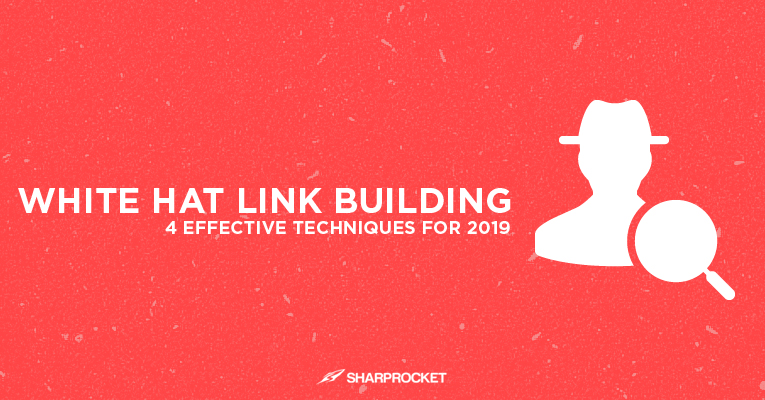
Links are important to rank for search in Google.
If you don't believe me, look at this chart:
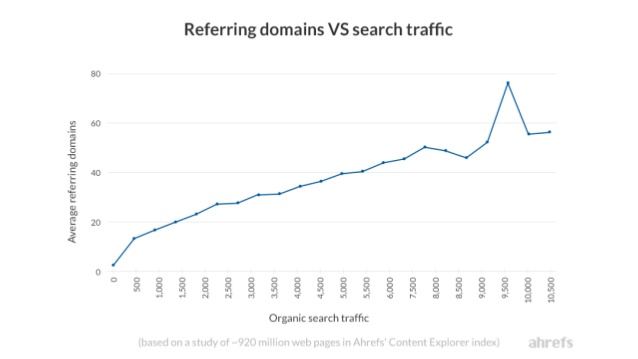
Based on the data showed by Ahrefs studying ~920 million content, the number of referring domains to a page correlates with the estimated organic search traffic to that page.
That means the more backlinks a page has, the more search traffic it gets from Google.
There is another similar correlation between the number of referring domains and the number of keywords a page ranks for.
The more backlinks a page has, the more keywords it can rank for.
Disclaimer: correlation doesn't imply causation. But those graphs provided a direct evident that links help you rank in Google.
Link building, we hear it all the time, but what does it mean?
What is Link Building?
Link building is the process of acquiring backlinks from other websites on the web with the purpose of improving traffic on search.
There are many ways to get a backlink from another site. And that's where SEOs, marketers, and business owners are constantly debating even up to this date. What should I use? White-hat, black hat, or grey-hat techniques?
Let's define what those words mean.
White Hat SEO VS Black Hat SEO
What is White-Hat SEO?
White-hat SEO refers the implementation of website optimization methodologies, strategies and tactics approved by Google. The main goal here is to provide users with the best search engine results page — user satisfaction.
If you are a white hat SEO, you follow the guidelines of Google. If you want to know all their rules, you can check out this page.

What separates white hat SEO from the rest of other types of SEOs is their ability to create high-quality content pieces that people would actively want to consume. This means putting enough effort, time, and money to craft a content asset that serves its user's search intent and content consumption needs.
The opposite of white hat SEO is black hat SEO.
What is Black-Hat SEO?
Black-hat SEO simply refers to usage of strategies, techniques, and methodologies that do not follow Google's guidelines. Marketers who are black-hat SEO still get results, but some of them may even found to be unethical in ways.
If you're a black-hat SEO, you are thinking of ways to break Google's guidelines, find loopholes, and execute strategies even up to the detriment of users.

A few techniques black-hat SEOs and link builders include deceiving users with cloaking and doorway pages, hacking other people’s websites to easily insert links back to their own websites.
Sad reality: black hat SEOs who work with clients aren't transparent about what they do, ending up sabotaging the reputation of their websites.
Doing black-hat SEO is very risky.If you're an agency, you should let your clients know about it beforehand.
Let's focus on link building alone.
Which is better? White-hat link building or black-hat link building?
White-Hat Link Building VS Black-Hat Link Building
The choice is yours.
If you are working with clients, you've got to take it seriously. You don't want to sabotage your client's sites without them knowing about what you do.
The moment you receive an inquiry from them about your services or the moment you took an initial call, that's a good time to be transparent in what you do.
Black hat link building takes a lot of risks. Link building shouldn't only concern with increasing one site's rankings, but in building a brand that's worth visiting by your users.
Remember, links pass through pages. This means that if a link isn't organically or manually acquired, you may have gotten a link but the link isn't going to pass any value to its receiving page. The value includes referral traffic and a potential sale from a customer/client (assisted conversion).
If you're working on your website, you can do a test run for yourself. You own your risk. In the majority of niches, you'll find most black-hat or grey-hat link building techniques being implemented in most sites.
Payday loans and gambling are some of the verticals where you have to play "by the rules". Otherwise, you won't have any chance of winning the search results for your target keywords.
Black-hat link building can give you initial results quickly, but some results won't last forever if they're not built solely on a good foundation. If you don't have solid content in the first place, even if you automate the link acquisition process, you're less likely to get results.
Moreover, doing black-hat SEO or black-hat link building takes a lot of investments. If you're doing Private Blog Networks, for example, you'll build several websites, publish content in them, and interlink externally to one another.
In 2017, I've conducted my own survey of the worth of investment of private blog networks.
Among 75 responses, here's what I've got.
How many websites do you have in your PBN network?
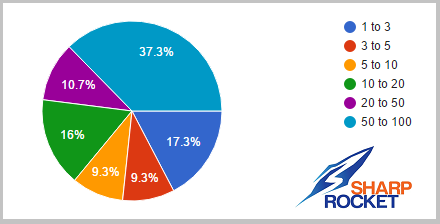
Thirty-three percent (33%) of the responses are heavily engaged in PBN, having 50 to 100 websites in their networks. A few even have a larger size of network (100 plus websites).
How much does it cost you to start each website including domain, private whois, and hosting plus a few articles to start?
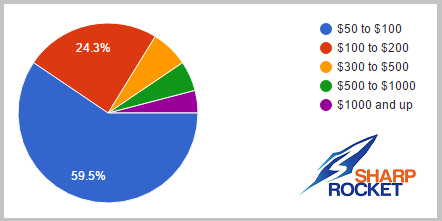
Like any website creation, you'll have to buy domains and hosting and create a few pages to get started.
With our survey results and math, the highest setup cost can range from $2500 to $10,000.
You can get that same amount and invest in your own site. Build its authority using white-hat SEO.
You'll not be reading this guide without knowing the white hat link building techniques that are still working and working effectively for websites today.
The Most Effective White-Hat Link Building Strategies
Let me start with this: there is no one white-hat link building strategy that fits all.
Every industry, every website, every backlink landscape has its own set of link building strategies (or I should say link building tactic) that will work.
However, there are sure-fire ways to get you started with link building if you want to pursue the white-hat SEO route.
SEMrush surveyed its 850 SEO and digital marketers who used their products regarding their best link building strategies that move the need of growing their backlink profile.
Let's dig into each of the top whitehat link building strategies. Are you ready?
Guest Posting
Guest posting is not dead
If guest posting is dead, why is it the most rated link building strategy? I doubt it's dead now.
Seriously, guest posting works if you know how to do it.
But first, what is guest posting?
Guest posting (also known as guest blogging) is the practice of contributing a content piece to another blog, whether that piece is an article, visual asset like an infographic, video, or any other content formats that will serve the audience of the blog (guest blog).
By all means, you can do guest posting at scale.
Whether you own one website or manage link building campaigns for several clients of your (if you're an agency), you can execute guest posting for multiple websites.
How to Do Guest Posts?
There is a process you can follow, and it starts with proper guest blog prospecting.
How to Find Guest Blogging Opportunities
Finding blogs and publishing websites suitable for your website has many different ways you can follow.
Google search
You can use the basic Google search (inurl:"write-for-us" "snoring") to find your initial set of prospects for guest blogging.
Furthermore, there are other specific guest posting search queries you can find in our search engine queries cheatsheet. But here are a few ones you can use right now:
- “KEYWORD” “become a contributor” inanchor:contact
- “KEYWORD” “contribute to this site” inanchor:contact
- “KEYWORD” inpostauthor:”guest author”
Be careful. Many blogs in every industry have "submit a guest post" pages but publish low-quality pages. They're easy to spot if you look directly at their blog section.
If you know your industry well, you know what type of content resonates the most with your niche audience.
I highly recommend using "become a contributor" as part of your search query. Given that most of the publishing sites with those contributor pages are normally looking for regular contributors and not a one-time off guest blogger, you're likely to receive repeated traffic from their blog.
You also get the benefit of bringing (absorbing) their audience from their blog to yours.
Author search
Another way to increase your list of gust blogging prospects is to identify an author who has contributed articles to different blogs in your industry.
For example, in the Internet marketing community, one that has been most active recently is Alex Tachalova of Digital Olympus.
If I want to dig in and look for available SEO and internet marketing blogs to guest post on, I'd simply do a Google search for his name, "Alex Tachalova' or even add a modifier such as, "contributor' or "guest post" — in order to give specific websites where she has written content with.

Content marketing tools
There are many different content tools that would give you quick results for any publishing sites in your niche. One that's most effective is Buzzsumo, where you can easily check for any high traffic publishing sites in your vertical.
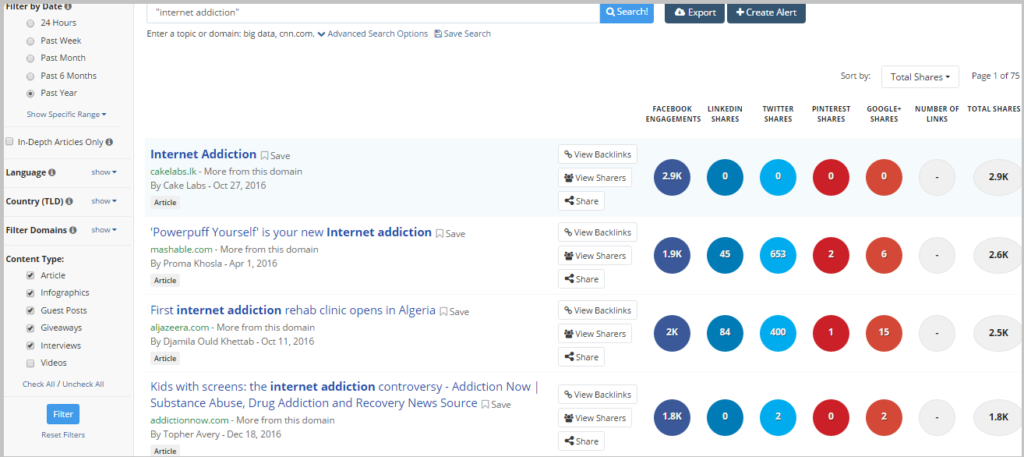
Another preferred tool is Ahrefs. Their Site Explorer has a competing domains feature that will give you more websites to prospect.
Basically, if you enter a domain URL in Site Explorer and click on competing domains, it'll show you websites directly competing with the website you've put in.
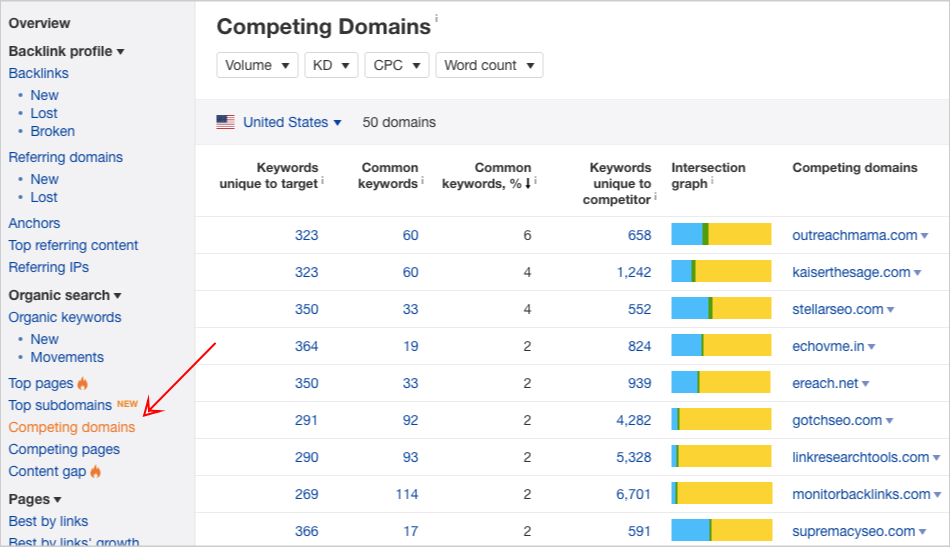
Those are websites you can also target for a guest blogging campaign.
Contact list of guest bloggers
Contacts are important to build a larger network for guest blogging. In any case, you've encountered a solo niche blogger, start building relationships through email.
You never know what that simple connection would lead you to more active lists of guest bloggers. You may ask for any possible blogs they've known or familiar with that might potentially accept guest contributions from you.
An advantage of doing this is that you'll soon discover that these blogs may not have a "become a contributor" or "write a guest post" pages, but accept contributors — if referred by someone they know.
How to Pitch For Guest Blogging Opportunity
This second step of the process may be interchangeably done with the third step (writing a guest post and publishing) depending on the list of prospect blogs you already have.
For example, there are certain guidelines in guest blogs where you have to send first a list of topic ideas write about, get approval on a chosen topic, and that's when you can start the process of creating the content.
Another process may need not to send any guest blogging topic ideas, given that you are accepted as a contributor already. They'll give you contributor access to their blog. You'll then write the post and submit it for approval.
In most cases, you'll have to pitch, introduce yourself and ask if they're still open for new guest authors.
Here's a good email template for a guest blogging pitch that you can use.
Subject: Writing for Example.com
Hey [First Name],
I’m [Your Name], and I write at [Yoursite.com]. I’m also a regular contributor at [mention a popular blog in your space].
Anyway, I’m writing to you because I have some really interesting content ideas that I strongly feel will be perfect for [Example.com]’s audience.
Optional: I’ve been following [abbreviation of their blog’s name] for quite some time now, and I have even mentioned your article about [insert topic of their past article] on this piece I’ve written [insert link to your post that links to them] a while back.
I can send you the topics I have in mind if you’re still open to new guest authors.
I appreciate the time and really looking forward to working together.
Cheers!
[Your Name]
How to Write Guest Posts
In writing a guest post, you need first to start looking at the blog's guest blogging or contributor's guidelines.
Generally, blogs that accept guest posts have their own set of rules that guest bloggers must follow before their content will be published on the blog.
Guidelines vary from industry to industry, and from the audience to the audience. They include word count, audience targeting, tone and style of writing, and additional formatting.
There are options you can choose from: do it yourself or outsource the content to a writer.
For brands, they typically have an in-house content team that crafts the guest post articles. In other online businesses, they outsource the content creation task to an outside freelancer who has expertise on the subject.
Editing, Revisions & Final Publishing
Each online business or website owner has their own sets of protocols with regards to their guest posts creation process.
Depending again on which you prefer: DIY or outsourcing — your editing, revisions, and final publishing will highly depend on it.
If it's DIY, you typically hire a proofreader or use grammar checking tools like Grammarly to improve your draft.
For businesses that have in-house content teams, their members do the tool of checking the quality of content before submitting those pieces to their prospect blogs.
For regular contributors of top authority publishing websites, what you all need to do is to submit your post and let an editor from their team do the proofreading.
How to Promote Your Guest Posts
Guest posts are meant to be promoted.
Apparently, the website you submit a guest post will use their resources (email list, social media accounts, etc..) to promote your guest post.
While that is often the case, it is always a gain to promote your guest post yourself.
Here are a few ways to promote your guest posts:
- Create an email marketing campaign promoting your latest guest post and target your email to segmented subscribers who'd find it useful.
- Share your guest posts on your own social media platforms. You may even spend a few bucks for social advertising to target fans or followers of brand you've submitted guest posts to.
- Internally link your new guest post from your existing content assets to drive visibility to it over time.
There are a lot more methods for guest post promotion, but those are a few things you can immediately apply to your blog.
How to Track Results From Guest Blogging
The goal of guest blogging is to drive results for your site. That includes new referral traffic every month, potential conversions from people clicking on links of your posts, and additional social followers which can be turned into email subscribers.
For example, I use ConvertPlug to create lead magnets for this link building blog.
For each guest post written, there are sections at the end of the posts giving away free resources relevant to the guest post in exchange for their email address.
Once guest posts are published on the blog, you can track the number of people who subscribed to your email list from those guest posts — you can configure settings of ConvertPlug to show it for you.
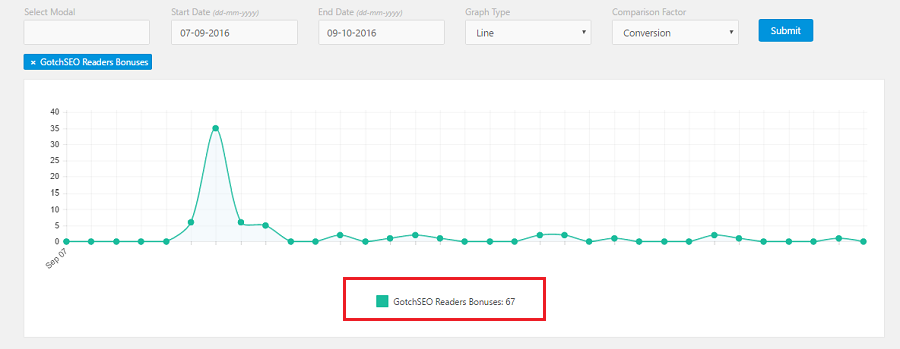
So, that's a good process you can follow for your guest posts.
If you want to know more details on each phase of the process, you can check out this definitive guide on guest blogging.
Guest Blogging Case Studies
Here are some case studies to give you evidence, inspiration, and additional insights on how to do guest posts:
- Guest Post ROI: The Data Behind 273 Guest Posts Says It’s No Good
- Guest Blogging Case Study: 5 Big Lessons From Writing 43 Guest Posts In 3 Months
Resource and Link List Pages & Broken Link Building
There are many resource pages in different verticals. These include link list pages for veterans, resource pages for students, people with disabilities (PWDs), people with Post-Traumatic Disorders (PTSD), eco-friendly enthusiasts (going green people), and many more.
Resource pages are simply pages that list down links to references on a particular topic. Some link list pages have categories to give you quick show of external resources on more specific topics.
What Is Resource Page Link Building?
Resource page link building is a link building tactic where a person contacts a webmaster and suggests recommended content assets to be added to a resource page.
What Is Broken Link Building
Broken link building is a link building tactic where a person contacts a webmaster who has a broken link in his or her website and recommends a replacement of link/s that include his/her target page.
The methodology, whether you use resource page link building or broken link building, depends if resource pages have broken links.
As simple as it sounds, you use broken link building if the resource page has broken links.
I've covered both of these methodologies here: link building for resource pages and broken link building - you may want to check these out.
Here are basic ideas of how you can start your own resource page and broken link building campaigns.
Here are simple tasks to help you build organic resource page links to your site.
1. Find a topic that serves a linkable audience
To get the most number of resource links for a page, you need to target a linkable audience or link page curators.
A link curator or a linkable audience gathers links on a specific page about a particular topic for the sole purpose of giving its intended website visitors references and resources that they can use either for personal consumption or business research.
These are types of people that are likely to give you contextual links on their resource pages. If they've found your content useful, it wouldn't be difficult for them to credit you with links for your content.
Here are some linkable audiences where your content assets can be catered to:
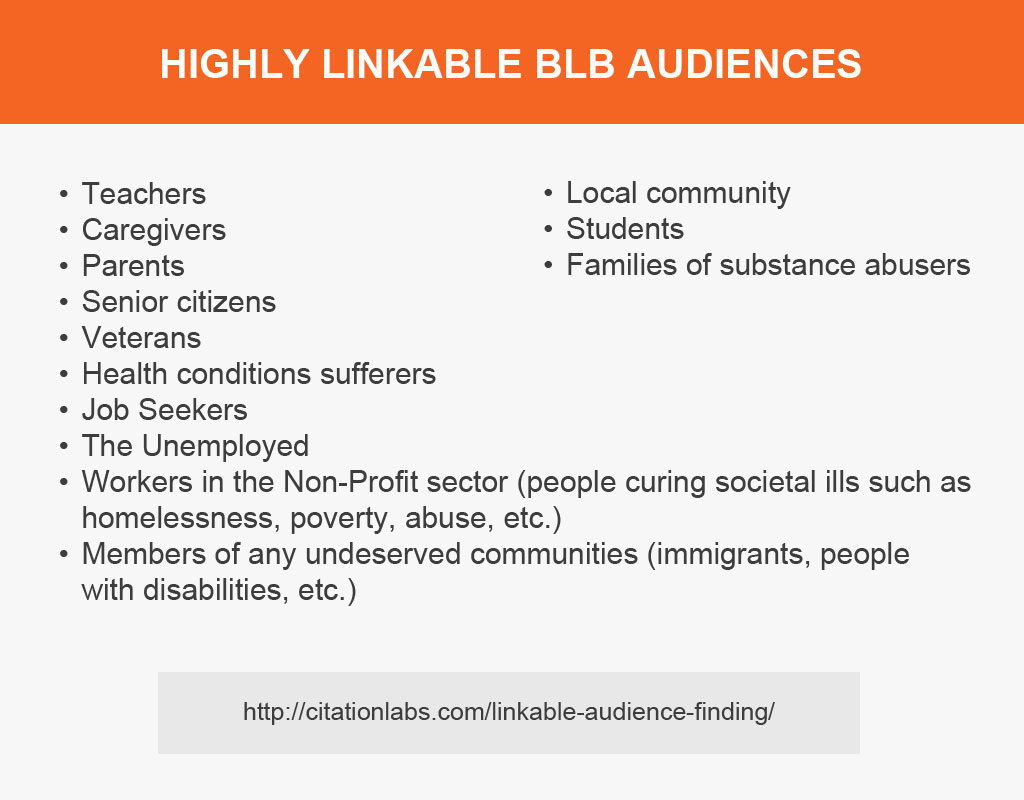
2. Create a content asset about a linkable topic
Once you've chosen your preferred linkable audience, you can now think of topics that best suit them.
For example, if you're in the sleeping industry, you'll typically have an ultimate guide to sleeping or similar versions of it. But that type of topic will not cut through the noise of many guides out there.
If you can target a linkable audience, let's say, Sleeping Guide for People With Disabilities — you'll serve a targeted audience than randomly promoting a content piece to any audience.
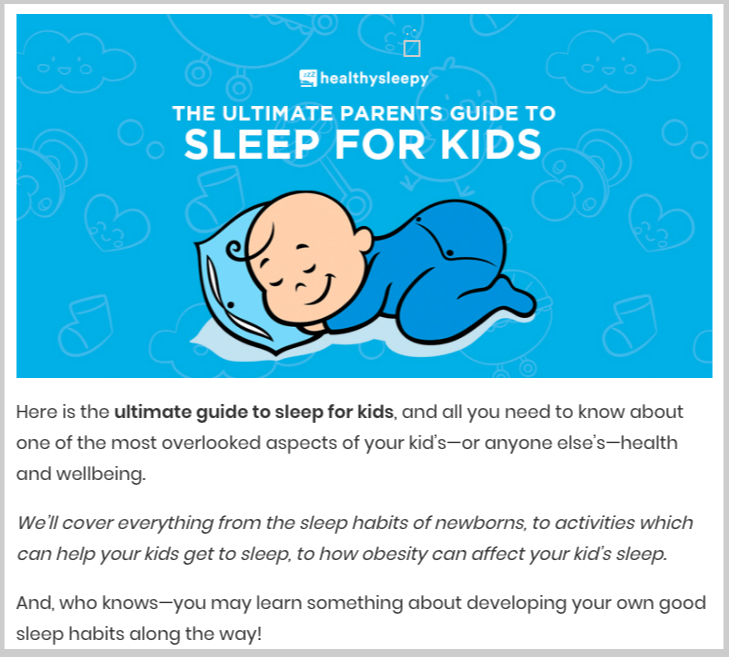
3. Discover resource pages and qualify them
There are many approaches to prospect for resource page link opportunities.
That includes using a tool by Citation Labs — Link Prospector, which helps you automate the entire process of producing relevant resource pages.
All you have to do is to enter keyphrases and configure your preferred settings, and the tool will give you a report of resource pages.

For further reading on this topic, you can see these guides on using Link Prospector and insights as to how many websites your link prospector should be looking for.
4. Find broken links and available contact information on resource pages
You can hire a virtual assistant to do this menial task for you or get a junior professional from your SEO team. Just hand them over a document that shows them the entire process of finding broken links on a resource page and of finding email addresses.
Here are two documents you can provide to your team member.
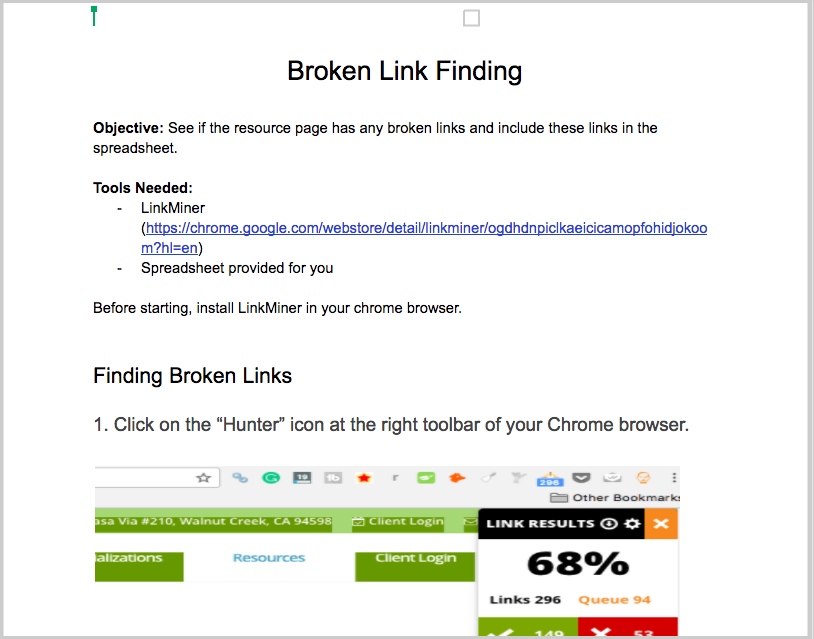
One important recommendation to organize your spreadsheet or any document to collect your link prospects is to use column footprints and/or color codes.
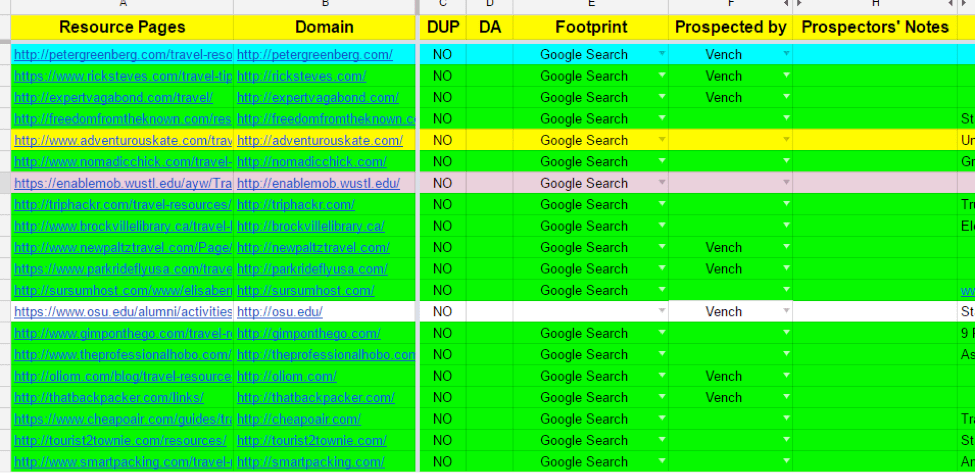
5. Send customized emails to your resource page prospects
You don't have to reinvent the wheel. If it’s your first time doing resource page link building or broken link building campaigns, you can get started with effective email templates.
Here are some email copies you can use for outreach.
Initial template without broken links:
Hi [First Name],
I was checking out some of the resources listed on the [Page Title] page of your website, and I noticed that I knew of a couple resources that might be worth adding. Would you be interested if I sent them over? If not, I totally understand, just thought it wouldn’t hurt to ask.
-[User First Name] [User Last Name]
Initial template with broken links:
Subject: Found an error on your [Resource Page Template]
Hi [First Name],
I was browsing the [Page Title] page on your site when I encountered a few broken links. I didn’t know if you’d be interested in knowing, but if you are, I’d be happy to point out which ones I stumbled across.
-[User First Name] [User Last Name]
6. Monitor new resource links
You can wait for email responses to your pitch in order to know if you received any organic links to your page/site. Another option is to track backlinks beforehand using tools like BrandMentions or Ahrefs alerts — to keep you notified through email of any new links.
[ tool to monitor links ]
Replicating Competitor's Backlinks
Doing competitor analysis is imperative in making sure you're not getting behind from your competitors.
By having that initiative, you'll get most of the benefits such as:
- Discovering opportunities you'll otherwise missed if you don't regularly check your competitors — these are keyword and link opportunities.
- Determine how much effort and resources to put in for your site on a monthly basis to cope up with the competition.
Moz recently created a superb guide on competitor SEO analysis.
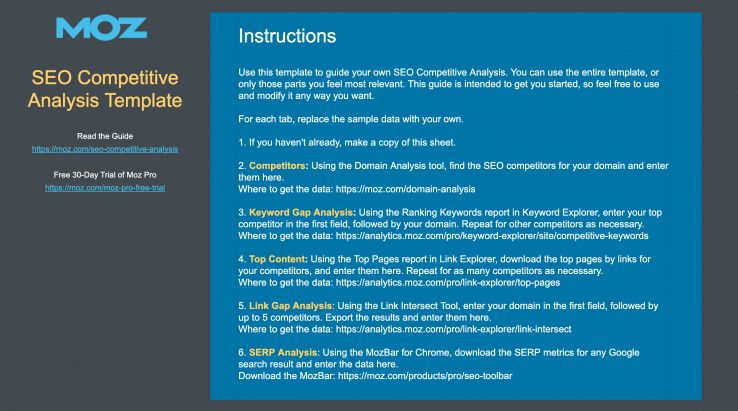
They have a template spreadsheet that you can use straight to your campaign.
Link gap analysis or competitor analysis is identifying gaps in links between your competitors and your site, understanding what strategies work in your industry, and discovering content formats that get most of the links.
You can start this competitor link analysis by entering your domain URL or (a page URL) on a link analysis tool along with URLs of your competitors.
One of the best features of Ahrefs - Link intersect can show you what pages are pointing to your competitors but haven't yet linked to yours.
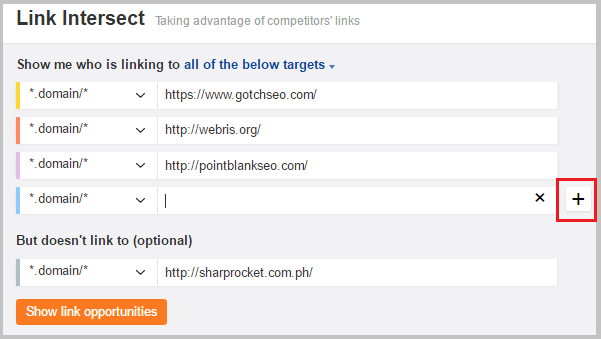
Using discovered pages that linked to your competitors, you can check if they're feasible to acquire based on your current resources.
Do you have content assets that are linkable enough to replicate competitor's backlinks?
The reality is that there are backlinks of your competitors you can't easily replicate given that they've built relationships with those linkers.
What you can do then is to analyze how they were able to get those links and replicate the strategy if you can - that's how to get competitor backlinks.
Unlinked Mentions
Lastly, there are mentions that deserve a pitch to credit them with links.
Link reclamation is the process of identifying and fixing broken links on your website and getting links from other publishers who mentioned your brand or content but didn’t link to your site.
There are many mentions of your brand that you haven't discovered yet because you were not able to track them. If you're an eCommerce site that sells a variety of products, there may be mentions of your products and other offerings that you could turn into precious links.
Start by identifying those unlinked mentions using BrandMentions or Ahrefs.
Once you've discovered them, you can proceed to pitch with a simple email copy.
Here's a good email template that you can use for link reclamation:
Subject: Thanks for mentioning [ SITE/BRAND NAME]
Hi [ NAME ],
Hope you’re doing great day.
I would like to drop a quick message to say thank you for mentioning [ BRAND NAME ] in your post – [URL].
I noticed that you hadn’t included details of our brand and was wondering if you would be kind to include a link pointing to our website, so your visitors would see more information about your reference.
Thanks again
Kind regards,
[ YOUR NAME ]
So there you have it, those are white hat link building tactics you can start implementing for your site.
Do Old Whitehat Link Building Tactics Better
You may be seeing this post again for 2020 or another year. Those old white-hat link building strategies I've shared may be too old and you may be looking for new ways to get backlinks to your site.
The thing is to be advanced in link building is to do old link building tactics better. Find ways to improve every initiative in the link building process - link prospecting, qualification, content creation, and outreach — and perform them at their high effectivity.
Creative Content Marketing and Link Building for eCommerce Websites Podcast
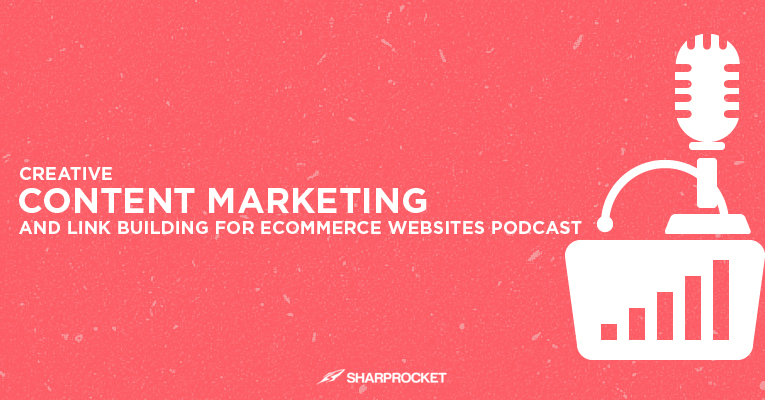
Show Agenda & Timestamps
03:55: Why don't you tell us a little bit about what is link building? And what is the best way that you see it for an e-commerce company to get started doing it?
08:26: Is this something that can really be done internally by a business owner or somebody that's in charge of their marketing? Or can it be outsourced? Or what is your take as far as getting started with link building?
11:42: In order to have content out there that's really appealing and attractive and in order for people to link to your content, what are some creative ways that you can suggest to do content marketing?
14:53: How does a company determine what's a good site to get a link on? Is there a criteria that you typically follow and what is it?
18:31: Is there a rule of thumb when it comes to the amount of links that let’s say a business should strive to get let's say on a monthly basis and how do you determine this?
Full Transcript:
ARLENE ROBINSON
Welcome back to the eCommerce Marketing Podcast everyone. I am your host, Arlene Robinson. And today we have a very special guest, Venchito Tampon, who’s the Co-Founder and Marketing Director at SharpRocket – an agency focused on quality Linkbuilding, Outreach and Strategy.
He specializes in Linkbuilding, Content Marketing, and Client Acquisition. He and his local team works with different clients of different sizes and types – small to medium brands, SEO Agencies, and Fortune 500 Companies in the US, Australia, UK, and Canada.
Welcome to the podcast, Venchito.
VENCHITO TAMPON
Thank you, Arlene, for having me. It’s a pleasure to be here and wanting to really give value to your listeners.
ARLENE
Okay, great. I appreciate it, and it’s good talking to you as well. I’m glad you’re on Linkbuilding. It’s kind of an area that I may not have delve too deep into before this podcast. So I’m really excited to talk to you about that as well as content marketing. We’ve had various takes on content marketing, but I know you’re gonna really bring some real value to the conversation as far as Linkbuilding and content marketing goals.
But before we can get into the subject of today, why don’t you tell us a little about your background? And specifically, how you got into what you’re doing today?
VENCHITO
Right, sure. I got into the online marketing industry in the year 2011. So, I became a content writer for a publishing company. So, I started from that and then been involved in the SEO industry. So, I was hired by John Cooper – one of the best Linkbuilding experts in the world. And so, he hired me to be his link prospector.
So, he got into the – all of the inaudible and the Linkbuilding - from link prospecting, outreach down to the content creation. And so, I learned about it and what I did is I started my own SEO blog. It was digitalphilippines.net. And so, from that simply just posting all of the learnings, it became inaudible you know clients in the first year.
And in 2015, I started my Linkbuilding agency with my partner Joseph, who now handles the operation side. And so, we are here in Manila, Philippines (where) we are based. We are a team of eighteen (18) linkbuilders, including all of our virtual assistants and our content writers.
ARLENE
Okay, great. That’s awesome. Well, you definitely got into the field I would say really a good time as many of our listeners know SEO, as you can probably The field I would say it really a good time as many of our listeners know SEO, and as you can probably testify to the fact that SEO has changed quite a bit and it continually will change.
And a lot of it is really spearheaded by Google and the changes that they make in their algorithm changes. All of that is really totally spawned by Google. These days link building is really - there's really a huge focus on link building more so than ever I think because not only the - is link building important, but I do believe content is also really a big, you know, it's pretty much where it's at, you know content building and Link building really kind of go hand and hand these days.
So, I think you're really on point is to where you are in your career. Now for all of the listeners out there that aren't really too familiar with the process, why don't you tell us a little bit about what is link building? And what is the best way that you see it for an e-commerce company to get started doing it?
VENCHITO
Basically, link building is a - just a discipline in marketing wherein you are based on the term, you just actually getting or earning links from other relevant websites that will inaudible whatever site that is and not just drive traffic, but also generate some assisted conversions, helping those visitors actually know more about your brand and hopefully buy your products or services.
And so, when it comes to, you know the best methodology, so I think there are a lot but I’ll just give you some of the techniques that we've been using as an Agency for most of our e-commerce clients.
Number one (1) would be to actually start with connections and partnerships because if you are a - whether you're a retailer, a manufacturer or you’re a supplier of products, you would always find our to buy pages.
So, let's say for example, you are a retailer, you can just make an inventory of all the products that you sell online and just check manually each manufacturer of those products. So simply by reaching out to those owners or those manufacturers and if you can actually see pages that are dedicated to listing down retailers, then you can actually get a link simply by doing that kind of outreach.
And so, you start with connections. You start with all of the partnerships that you had whether it's an offline or online thing. And another thing is that I've seen this with all of the eCommerce sites. There are a lot of blogs or websites that might or that have mentioned your products or brand name, but then giving you the actual length, so if you can actually track those mentions and say simply just sending them pitches and saying “Hey, we've noticed that you mention us on your blog da, da, da”, and then from that you can actually inaudible link. From that simple pitch, you can actually gain a lot of links in the first few months, if you haven't done that.
And probably one of the underrated and even forgotten methodology is the forum marketing because in 2009, I think in 2011, it's been you know, many marketers have spammed all of the forum sites, and I'm looking forum marketing from early generation perspective and I’m just trying to spam the threads with links waiting to the sites. But basically, giving value by answering questions in forums, if you look at that, it's not just getting a link but actually driving potential customer to your website. And I think those methodologies - those approaches will really help you get started with the inaudible.
ARLENE
That’s some really great advice, you know from one, the first thing that you mentioned as far as building relationships that's really kind of where it all starts as forming these relationships and you talked about what you can do is there may be a lot of companies out there that are referencing your brand or your company, but not giving you a link or maybe they're linking to an old piece of content or something that maybe is - not where you want to direct people maybe it's older landing page.
And so yeah, one thing you can definitely do is reach out to them for sure. Another thing that I mentioned to companies that I deal with and I'm actually in the process of posting a video on this because we put out a lot of SEO videos here at inaudible to help enlighten our customers and recently launched the channel actually called the e-commerce Brothers channel on YouTube and they'll be putting out a video where it talks about a little bit about what you said as far as forming these relationships.
And one thing that you can do also is to really try to get some of the heavy hitters pointing to you people that have a higher authority is you can link to them and then don't ask for anything and just start forming relationships that way just link out to them and various articles and then just let him know I linked to you this is a great piece of content. We really appreciate it. And that's one way to kind of get your - your foot in the doors.
So yeah, it's just something else wanted to add to that which I think is very useful and something that an e-commerce business can take advantage of right away. Now, I know the listeners that are out there can be a variety of businesses - a variety e-commerce businesses or people that are working for e-commerce businesses on the marketing side, and one question that I typically get with regards to any type of marketing is and specifically with link-building is, is this something that can really be done internally by a business owner or somebody that's in charge of their marketing? Or can it be outsourced? Or what is your take as far as getting started with link building?
VENCHITO
I think it really depends on the industry. If you are in a very competitive space, you might want to not just do it internally as you get all of the processes were trying to you know, hire someone or linkbuilding agencies to do that for you because the thing is when you are doing it internally, it will really require you to set up processes because sooner or later when the demand for links is increasing it will require you to just hire more members and make sure that the prospecting, the content creation, and outreach are all set up.
So, you can do it internally, but just make sure you already have some setup process documents for you to scale the entire process or the entire campaign. And inaudible, of course, for example, you can just simply you know, hire a freelance writer to do the content for you, graphic designer to create the formats and make sure the page is visually appealing to its targeted visitors and so on and so forth.
And so, there are just certain areas in linkbuilding where you can just simply outsource but make sure if you're doing it internally you have to set up processes. The thing with outsourcing is that and I always get this a lot because they're bad companies, especially link building agencies will simply just you know, send you all of the live links they've acquired for your website. And but if you look at the quality of those things it's doing more harm than good. So, if you are trying to outsource it, make sure you do some research - the quality of the links.
I really recommend e-commerce site owners to get some recommendations, and referrals is a good indicator to really check if the agency has high reputation inaudible but if it's can perfect in really give you the quality links that you're looking for.
ARLENE
That's really good. I appreciate that answer and I think one of the key things that you mentioned and I think not only internally do you need to have your own process documents, but I think for even for the outsourcing, I think that's really a key thing because I think a lot of times especially these days, see it's a lot easier these days to get freelancers and get people to do stuff remotely, but you can't just hire somebody and just expect them to run with stuff.
You have to have things documented well, otherwise, you know, it'll be frustrating not only for the remote worker, but also for yourself as far as you know hand-holding that you may have to do if you don't have your process documents in place, so that's really the main key thing, I think, no matter what.
The process has to be in play for both sides of it. Now, switching gears a little bit because I know you're really - really an expert also on content marketing. These days you do have to be creative because I think as you can probably agree on the internet is really diluted, I think you could say almost with just a ton of just content some of it a lot of it is really no good.
And so, in order to have content out there that's really appealing and attractive and in order for people to link to your content, what are some creative ways that you can suggest to do content marketing?
VENCHITO
The key is that it's not just making your, you know, infographics or visually appealing - all of those things, but really trying to identify your audience or when getting you should actually create content assets that will not just give you first or initial set of links, but can actually, in the long run, can actually help your site earn links even without doing outreach.
And so, one of the key ways is to actually create a content that's targeted to a linkable audience. So, this term linkable audience is - was coined by Garrett French of Citations Lab.
So, basically linkable audiences are groups of people or creators of pages that have their own resource pages. So, for example for the recycling or the disposal page, it's simply lists down all of the references and resources of that given topic. And so how you can actually approach your content marketing by targeting linkable audiences, simply for example, if you're selling batteries, if you're an e-commerce site that sells batteries you can actually either target inaudible or to create a content about battery recycling or if you are targeting teachers or parents, for example, you can create a guide or a research guide about battery 101 for the kids.
The thing here is that you're increasing the chances of your content to gain so much to links. And in the long run if the page is able to rank for keywords, then it will be referenced by other publishers once they find it to Google search. And so those things I think creating a content asset for a targeted audience is one thing.
Another methodology that I think will really - is very effective nowadays is creating an asset about data or statistics because this type of asset is mostly you know, reference by publishers and content creation. Our content creation teams or content creators and so the opportunity to get an inaudible rating is very high.
And the last thing is to recreate broken pages or dead pages. So, what you can do is to actually reverse engineer your competitors and see what are the pages that already given them links that have been shut down by them that you can actually recreate.
So, these are the pages that are broken, but if you look at this using a link analysis tools, you'll find out that the - these pages have gotten a lot of links. And so, when you create that content make an improved version of it, what you can do is reach out all of the blogs or sites linking to the original content and then from that process you can actually get a lot of links through that.
ARLENE
Great. As far as you mentioned, of course creating this content that's really the heart of it creating content that you want people to link to and kind of flipping it, then once you've got that content created and like you said if it is solid content people we want to link to it, but then on the other side of it is you want to get a link out there on these other sites.
And so, how does a company determine what's a good site to get a link on? Is there a criteria that you typically follow and what is it?
VENCHITO
I think the basic thing is number one, it should be the site or the blog should be relevant to yours. And I think even if it's common sense already, I think there are a lot of SEOs and link builders even marketers who (are) still trying to get links from irrelevant sites. And the key is that it's not - again, the quantity of links that you're after or looking for, but you're also trying to you know, make sure that the site or blog is relevant to your search. that's the first factor.
And the second one, I would say it's the type of links that you're getting because this type of link is something that people can click on and so they will be able to jump to your website and probably either you know, follow you or get to know more about your brand and hopefully buy your product or service. So, the thing the type of link is very crucial if you're actually executing link building campaigns.
In terms of metrics, I think it really depends. I think there are companies who are very keen into you know DA, Ahrefs DA or you know Moz, but I think one thing that's not been discussed over and over is the SEM Rush organic traffic.
So, the thing is when you're trying to get a link from a website or blog, you want to know if that site is getting is ranking for multiple keywords and it has had it happen is it will drive you consistently traffic over and over once you get a link from that.
So, I think traffic, conversions, relevance and if you can actually get a link from brand to brand, you know context, I think those things will really matter if you do you want to you know, make sure that you maximize that your efforts in linkbuilding.
ARLENE
Yeah, you're totally right. The key thing I think is the fact that it number one thing you should look at is if the site is relevant because I think really kind of on the early days of the internet and before Google was just as sophisticated as it is now as, SEOs I think we're in agencies were out there just trying to get as many links as possible on sites that weren't even relevant and that may have worked 10-15 years ago something like that. But these days the Google algorithm is really advanced. So, you know, I think back in those days, it was probably at in its infancy right now. I think Google is probably at the genius level that's already a cruise through her college.
And so, it's a big difference right now. So, you do have to be smart about what it is that you're doing and just the main thing I think to think about is - is this something that is going to is this link that I'm going to put on this site first if it was irrelevant and does it add value to the context of the actual content.
So, you want to make sure that - that is always the case and that it makes sense for the reader because you know, that's ultimately what Google says and I think that's what they really stand behind is ultimately they just want to make sure that things that are indexed give people a great experience a user - a great user experience.
And so, if you're searching for some particular keyword, whatever is returned, their whole bottom line, is that really what the person was looking for and is a good experience once they get there. So, that's the key thing there.
Now, we've talked a lot about the link building and I know that process and it's just something that I know you're doing on an ongoing basis for those businesses that are let’s say they just getting started with it. Is there a rule of thumb when it comes to the amount of links that let’s say a business should strive to get let's say on a monthly basis and how do you determine this?
VENCHITO
The answer is again, it depends, because we have experiences with clients were in you know, one client will - would like to you know, build 20 or 30 links at the maximum level. Some just wanting to you know, 4 to 6 links, but there are things that I really recommend for especially inaudible your end. So, if for example you ensure a coupon space, there are a lot of sites there are a lot of sites are actually engaging in the link building. So, they're trying to you know, get 50-60 even more links per month.
So, in that case you got to keep up with the pace of the - of the link acquisition they're doing so that would probably be your mark in a sense. But not just about the quantity, but make sure you know, you're trying to achieve a higher quality level in terms of links.
Next is the only thing at the vertical but also checking your competitors. So, you can use link analysis tools like, you know Ahrefs or even SEM Rush just to see what they’re getting. There's one – there’s one term and that is the link velocity. Basically, link velocity is the speed - the number of referring domains a site gets every month or week, whether it’s organic inaudible to outreach. There's no really good number for every site, you really have to do your own research.
Either looking at the vertical or either looking at the order of the competitors that you're trying to you know, dominate over and so yeah from those things you can actually estimate the number of ranges, let's say 10 to 20 links from one.
ARLENE
Okay, great. Yeah, that is a great advice there and I'd appreciate your honesty and that it's really hard to tell, but yeah, I think every business or industry is going to be a little bit different and it does really depend on the particular vertical a year in and what your end goal is with its link building. And so, that totally makes sense.
Well then, Venchito, I really appreciate you coming on here today for this episode of the e-commerce marketing podcast. You've definitely been very insightful with regards to the link building on that you're doing day in and day out as well as you know content marketing.
And at this point, I like to always close things out with just one other quick question that I kind of switch gears. It's my closing fun fact, so we learn a little bit more about you. What is one fun fact that our audience would be surprised to know about you?
VENCHITO
Fun fact, I think I don't know how to ride a bicycle or motorcycle.
ARLENE
Okay. Okay. That is an interesting fact. Okay, so you don't - don't know how to ride a bicycle. Well, I don't know how to ride a motorcycle myself. So, I think I can join you on that one. But do know how to ride a bike ride a bicycle and you guessed it really is never too late to learn. So yeah, definitely something I encourage you to do. I do hope I can occasionally here in the Orlando Florida area where I live in yeah, it's a great - great exercise and it's good to get to get out on a bike.
VENCHITO
Yeah.
ARLENE
Okay, great. Venchito, well finally, if our listeners would like to pick your brains anymore regarding link building a content marketing, what is the best way for them to get in touch with you?
VENCHITO
Sure, they can visit my website at www.sharprocket.com.ph that is S-H-A-R-P-R-O-C-K-E-T.com.ph or you can send me an email at venchitotampon@gmail.com that is V-E-N-C-H-I-T-O-T-A-M-P-O-N@gmail.com. And send any questions if you really want to, you know learn about linkbuilding, (or) if you want to invite me to speak at your event or even in your podcast. But I want to make sure - I really want to make sure we'll give you some more value to your listeners margins. Yeah, that's it.
ARLENE
Okay, great, Venchito. We appreciate that and I know our listeners will take advantage of that and reach out to you as well. And once again, thank you for joining us today on the e-commerce marketing podcast.
VENCHITO
Sure, thanks for having me, Arlene.
Content Strategies for Organic Growth
You've heard a couple times that content is king, yet most people still don't quite understand how to execute content strategies with the aim of growing their site's organic traffic.
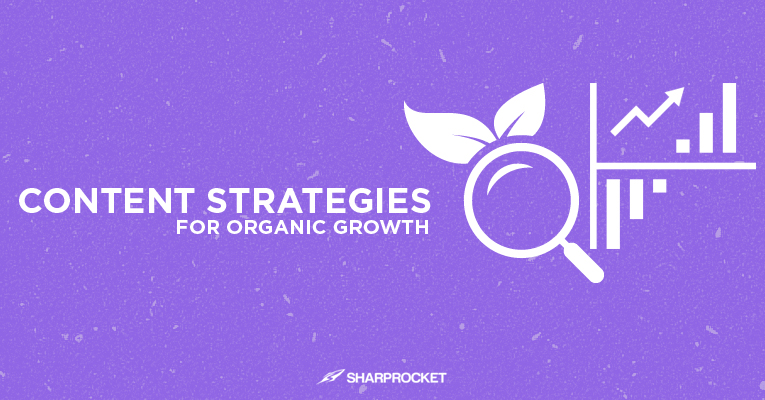
It's not easy to come by with a few techniques you can easily implement that guarantees results, if fits right to your site and to your industry.
Proper execution is a key to growing what you already have.
So before you close this page, here are four techniques that are not just trendy, but very actionable for your site of any type.
LEVERAGE DEFINITION OF TERMS AND ABBREVIATIONS
Your industry has a lot of terms. You can't assume all your readers know about. The number of industry terms depends on industry AND how technical practitioners are in your field. If there are more professionals paving their way to create their own jargons and popularizing these, it would mean more opportunities for this type of content.
Create your own short-form content that defines industry terms.
You may already know if you're a content marketer, but more than looking for exact phrases or terms people in your vertical uses.
Seek for any terms that are used in different contexts for different industries. A good example of these are abbreviations. The abbreviation, MOV, has individual meanings for many contexts: business, physical education, medical, construction, and even games.
- definition of mov
- mov definition
- mov meaning
- mov stands for
- what does mov stand for
- what does mov mean
Go even further than just publishing a page with meta titles: definition of ___ or meaning of ____. Know which other connected words have higher search volumes than the latter two phrases (definition and meaning).
You can discover keywords definition-pages are ranking for by entering the URL of the top pages ranking for the keyphrase you're targeting - "definition of ___".
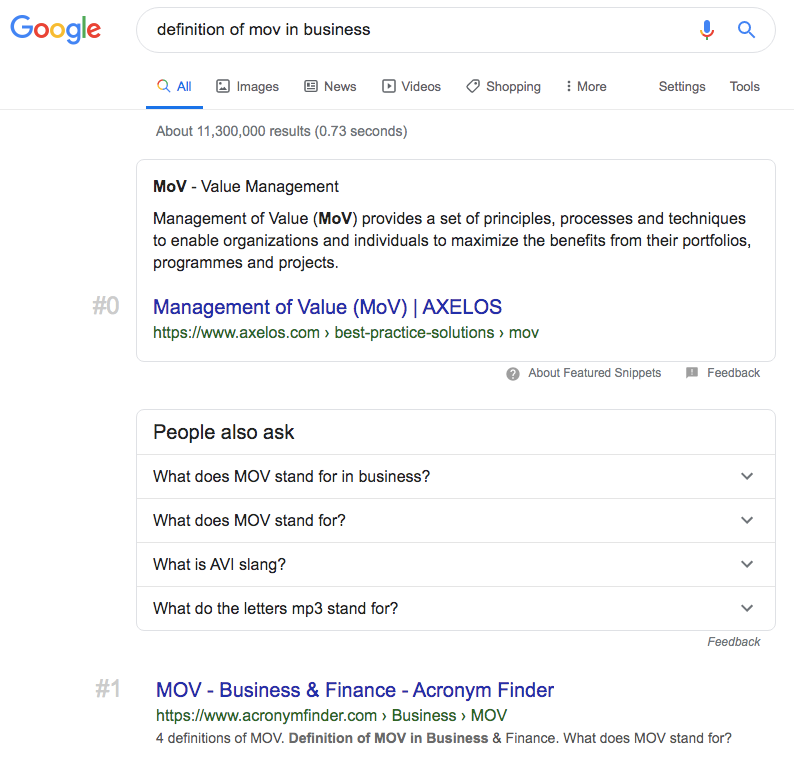
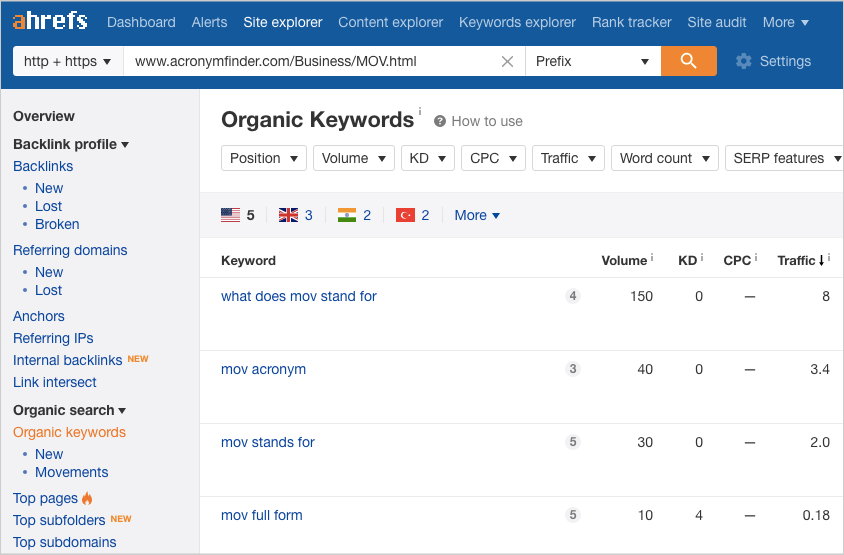
You'll see keyphrases you can incorporate to your page to make it also rank for them. You get more ranking opportunities in doing so.
PILLAR CONTENT STRATEGY
Creating pillar pages based on topic clusters as part of your content marketing campaign is imperative in building the authority of your site given that search engines use relevance and today's authority to determine if the site or page is worth ranking for certain keywords.
A pillar page is the basis on which a topic cluster is built. A pillar page covers all aspects of the topic on a single page, with room for more in-depth reporting in more detailed cluster blog posts that hyperlink back to the pillar page.
In order to create pillar pages, you need first to understand topic clustering.
A few of the benefits of creating pil:
- Increases potential to rank for higher volume keywords, even higher value as a single pillar page is populated with smaller clusters that can cast a wider breadth to a certain topic.
- Establishes semantic relationships between pages' content and other overacrhing pillar pages (clustered pages).
- Benefits the internal linking structure of the site as it leads people through links of pages — making them efficiently go through your brand's buyer journey.
- Earn organic links by ranking for terms mostly referenced by publishers.
Get started with this by looking for parent keywords - certain topics that cover the broader part of subject and that comprise different keywords attached to it.

Depending on your industry, dig deeper into certain niche topics your brand only cares about. Don't try to include irrelevant parent topics, but as much as possible, look for the parent topic of your chosen keyword. You can easily do that using Ahrefs.
DISCOVER EMERGING KEYWORDS
Search landscape evolves as more and more people are doing their searches differently based on their needs and their contexts.
New emerging keywords are popping out in every industry that particularly addresses informational and even purchasing needs of the audience.
By taking advantage of emerging keywords (normally as part of your keyword research process for blog's content creation), you will reap a number of benefits including:
- Getting initial rankings for low search volume, yet to potential to rise as demands get high
- Reaching new ranking opportunities by helping your existing content assets rank for new terms
- Increasing click-through-rates for your existing assets by adding related words that matches their new intent.
- Acquire contextual links by ranking early for emerging keywords on search results.
How do you find these new keywords?
There are two ways you can utilize for your content marketing campaign.
The first one is by using Ahrefs as a tool to semi-automate discovery of emerging keywords. Its Keyword Explorer has a feature that filters keyword search results based on NEWLY DISCOVERED.
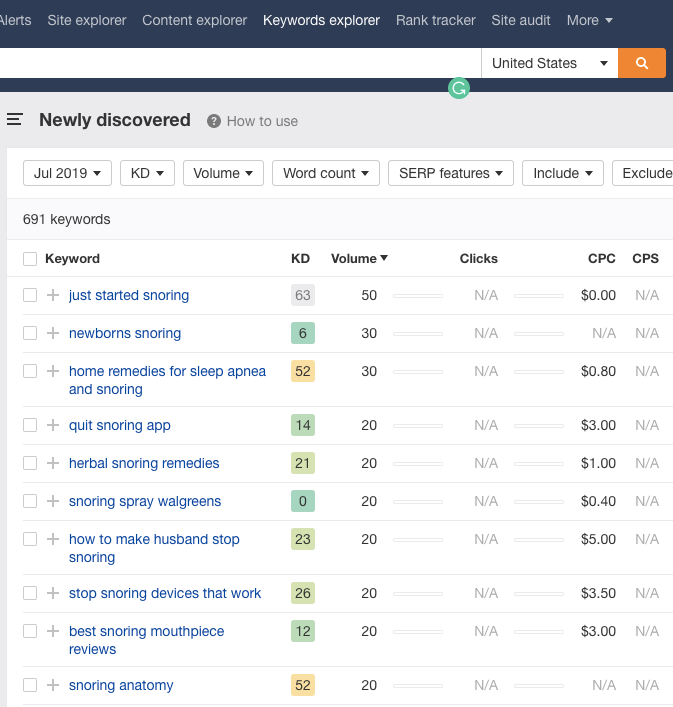
Another method is to use Search Console in order to discover emerging keywords your pages have been visible on search results.
With these new keywords, you can execute useful initiatives, such as:
- Improving your content depth by including topics from emerging keywords you may have discovered.
- Using emerging keywords as thematically-related anchor texts in your posts linking to other related pages in your site.
DEVELOPING YOUR KEEN EYE FOR ORGANIC GROWTH OPPORTUNITIES
There are many opportunities to develop your content to match to new emerging opportunities in order to increase in organic traffic from channels like search and social.
Audit your existing content assets and research well on your industry landscape. Through observation, planning, and execution, you'll never run out of ideas that can be of useful to accelerate your content strategy.
Link Building: What can we automate?
In this episode of SEO Automators, Garrett French and I sat down with Noah Learner and Jordan Choo, to discuss systems and automation in link building, and even the success and failures in experimenting automation techniques.
Show Agenda & Timestamps
05:39: How have you seen link building evolve over the past years?
06:58: Have you seen it shift to link building being branded more as like a digital PR Strategy or do you see it still as no link building for building links in?
10:09: Have the both of you seen link building becoming more and more difficult are more companies get into the link building space over the past few years? Or has it stayed relatively the same?
12:01: Have you seen link building become more and more difficult over the years to say like earn a link or even just get a response from someone that you’re reaching out to?
16:18: What tools do you – do the both of you find useful that you’re using on a daily basis for any part of your link building process?
18:33: So they’re almost like personas then rather than for client ABC?
19:43: How do you tie a link prospector in – if at all – and can you automate how to use the tool?
27:00 Do you guys automate how to get stuff from Step A to B to C to D?
31:36: Should link building even be automated, right?
42:27: Let’s actually talk about what have the both of you been able to successfully automate?
50:12: Have any of you failed miserably at automating something?
Show Notes:
- Citation Labs
- ZipSprout
- Follow Garrett on Twitter
- Linkable Audiences
- Citation Labs Link Prospector Tool (review)
- Ahrefs (review)
- SEMRush
Full Transcript:
NOAH LEARNER
Good afternoon everybody and welcome aboard to our Friday Automation Hangout. Today we’re tackling a topic that not everybody thinks is something can be automated.
We’re gonna tackle that and see if there are automations or at least processes that we can dive into to help us all build links to all of our sites that we want to make more money with.
Today we’re exceptionally gifted in that. We have two of the real Titans of Link Building. We’ve got Garett French. Garett, hello – hello.
GARRETT FRENCH
Hi, thank you, Noah.
NOAH LEARNER
This is an amazing opportunity. I met – I met Garrett at a mosque on local back and I think February 2016.
I was really – really lucky to bumped into him and we had an amazing sushi meal with Greg Gifford where –
GARRETT FRENCH
That was awesome. We’re pretty ensued. I’ve forgotten all about that and gosh there was a lot of sushi and a lot of Saki. It was a good night.
NOAH LEARNER
Most people that know me know that if I can get someone out of a meal, I will pepper them with questions.
GARRETT FRENCH
You were – you were in school I’ll say that. Definitely in school -
NOAH LEARNER
Ask you about 200 questions –
GARRETT FRENCH
Yeah –
NOAH LEARNER
For two hours –
GARRETT FRENCH
And it was awesome. That’s when I knew you were going places –
NOAH LEARNER
And today we’re also incredibly lucky to have Venchito Tampon who helps enterprise – small and medium-sized agencies. You’re also a motivation speaker. I didn’t get through enough of that content. You can dive into it a little bit. Can you tell us a little – guys who wants to go first?
And also, today is really special and that I would be more of a target for their services than a peer practitioner whereas Jordan does this – he does a way more link building than I do. So, it’s gonna be a special opportunity for everybody because Jordan is going to run the show.
Can I turn it over to you now, Jordan?
JORDAN CHOO
Yes –
NOAH LEARNER
Okay –
JORDAN CHOO
You can. Thank you, man.
NOAH LEARNER
Take over. You’re the man.
JORDAN CHOO
Okay.
So, Garrett, I’ll – I’ll let you introduce yourself for those of you who don’t know him.
GARRETT FRENCH
Hi, guys. I’m Garrett French. I run CitationLabs. It’s the primary job that I do. I also have – it’s a kind of a startup agency with another sass tool coming along called Zip Sprout that helps find and – and connect with local events and nonprofits that you can potentially sponsor and yes, potentially get a link from. So, that’s – those are my two kind of – I guess stakes in – in the industry.
JORDAN CHOO
Awesome. Garrett, quick question. How did you get into link building and all these fun – all this fun stuff.
GARRETTH FRENCH
How much time do you have? Okay, so, I guess the short answer is I was really into content and so this was 2000 and I started writing about SEO 2001 or two so, I’ve been in kind of in the space since then.
But I got into link building specifically as I was kind of moving from doing writing as a – as a consultant into – with a company. I started working with a buddy named Ben Wills who had started a link building kind of link graph called antelope and we started get link building work and I had some opinions about how it should be done and did a lot of writing so.
But it was really from that initial collaboration with Ben and this was 2011 maybe? 10, 9, somewhere around there and that’s when I really got started in link building and just kind of slowly have accumulated tools and other periphery services as – as we’ve proceeded.
JORDAN CHOO
Very cool. All right, Venchito you are up. Let everyone know more about you.
VENCHITO TAMPON
Sure. Hello, guys. My name Venchito Tampon. I run this link building agency – Sharp Rocket here in Manila – Manila, Philippines. It’s almost 02:00 AM here.
Yeah, we work with different agencies mostly on the e-commerce site and we have some – we work with marketing departments of some of the top brands in the SEO industry and I started in the - I started with doing building links way back in I think 2014? I was hired by John Cooper who runs the Hyperlinks Media – who owns Point Blank SEO.
And so, he introduced to me link building – how to actually build white hats. I really didn’t know much about white hat type of things and difference between black hat and those kinds of stuff. And so, I started as a Content Writer then go into that route of doing link building and so now, we are here and we’re building links for multiple clients.
JORDAN CHOO
Awesome. Awesome, so let’s dive right into it guys. First question is how have you seen link building evolve over the past years?
VENCHITO TAMPON
Who goes first?
GARRETT FRENCH
Venchito.
VENCHITO TAMPON
Okay.
GARRETT FRENCH
Okay, I’ll just start and then you’ll have trouble turning me off so go ahead.
VENCHITO TAMPON
Basically, what I’ve are number one, in terms of strategy. If you are doing – if you were building links way back in 2010 or 2012 you’ve got to understand different strategies that already or has been executing.
And today it’s not just building links for rankings. You’ve got to understand five (5) types of goals like you’re building links for ranking, you’re building links for traffic, you’re building links for assisted conversions. The purpose and the goal of place is not anymore just to know rank and dominate the top – the top search phrases in your space it speaks.
The first thing that I that has already been evolved in most agencies and most companies is how they actually aim at building links – so the purpose and the goal of link building, I think that’s the first place.
JORDAN CHOO
Interesting. So, have you seen it shift to link building being branded more as like a digital PR Strategy or do you see it still as no link building for building links in.
VENCHITO TAMPON
I don’t think that’s already been combined with digital – digital PR. Digital PR and link building are still are – they’re still difference from each other in such that link building is still more focus on making sure that the pages are getting some traffic from organic. Digital PR is more of the advertising and the brand impression and all of those things. So I think there’s a – there’s still differences between digital PR and link building.
JORDAN CHOO
Cool.
NOAH LEARN
Can I jump in?
JORDAN CHOO
By all means, Noah.
NOAH LEARNER
Garrett it seems like you talked a lot about this in your seminars – the difference between the two practices and – and really the different parts of the pyramid that – that each is attacking. Is that right?
GARRETT FRENCH
Sure, yeah. I – I see two different tiers of publisher. The top tier are the ones you’ve heard about, you know you’ve seen them when you look in the news or what have you or if it’s an industry specific, you know who it is. And then there’s everybody else and so I leave the top tier to the PR teams and the you know the neo man’s of the world like the – the fractals where really kind of swinging for the fences with the big data play and concentrate on how do we scale, engage within our reach to the rest of the publishers who kind of support.
Or right into this whatever the space happens to be and kind of write for the types of customers that you’re trying to reach with your rankings for sure. But you want to be – you want to face them in the – on the publishers where you get links from. You want this to the best of your ability be - still be customer-facing when you land on those – when you get those links.
But yeah, definitely the – the shift I’ve seen is – is this huge kind of – just in terms of what people are talking a lot about and what people are writing a lot about and what gets shared the most on Twitter or on LinkedIn – it’s always, it’s – it’s almost always more of the – the newer school of big branded pieces like Venchito is saying that are – that are data-driven generally and sometimes not super relevant to the target customer or to the – always to the topic of the – of the company.
So sometimes I see square pegs shoved into these round holes, but – but anyhow that’s in the past. You know ever since the rise of the info graph, I guess, 2015 or so maybe sooner that’s I’ve seen – that’s just kind of what is talked about the most and what people kind of think of when they think of link building more, you know in the past few years for sure.
JORDAN CHOO
Interesting. So, have the both of you seen link building becoming more and more difficult are more companies get into the link building space over the past few years? Or has it stayed relatively the same?
GARRETT FRENCH
Go ahead, Venchito.
VENCHITO TAMPON
Yeah. I would say that in terms of strategy, there are a lot of SEO Companies already pushing towards thinking more of the relevant side rather than thinking of just a strategy or specific tactic.
For example, companies today or even SEO - Link Building Agencies are trying to get away from this Scholarship Link Building Strategy given that most SEO Professionals are already executing that in a massive scale which literally affects the entire SEO industry.
And so, there are a lot of you know there’s – there’s I would say little to no value in those kinds of strategy. So, in terms of strategy, I would say there’s still need to execute more of a very specific, relevant side.
For example, if you’re doing broken link building. You’re not just pursuing a very broad or general industry side, but you’re trying to market your content asset to specific audience such as eco-friendly audience. So those linkable audience that we’re – that we’re referring to based on the French article.
JORDAN CHOO
Cool. So how about yourself, Garrett?
GARRETT FRENCH
I’m sorry I – could you ask to me the question again? I swear I was listening. Sorry.
JORDAN CHOO
No – no – no worries. It’s Friday, man. So, my questions was how – have you seen link building become more and more difficult over the years to say like earn a link or even just get a response from someone that you’re reaching out to?
GARRETT FRENCH
Well, for links and resource page link building, we’ve definitely seen that it’s just getting like Venchito is talking about with scholarships. I mean these folks are getting now probably hundreds of e-mails a day with new scholarships or if you have a link resource page on eco-friendly stuff, they’re probably getting a bunch of e-mails every day too.
And so, it’s definitely a more crowded. Like if you’re using that specific tactic, it’s getting – it’s crowded, it’s harder. We’re still you know, building lots of links. I mean – is it – is it harder now? Definitely. Do you have to send more e-mails? Yes. But sending e-mails doesn’t necessarily super difficult. It’s – it’s disheartening, you know when you’re like man – but you know I think for specific tactics, it’s definitely harder, but I think to Venchito’s point is what else you know go - if you’re starting and you’re asking what strategy – what’s our strategy, what tactics will support that, I think that’s a more effect – like that’s going to keep you targeting relevance or targeting where are my customers actually going – my potential customers.
How do we connect with them you know, what kinds of context do we need to either create or – or look for on page that would make me a signal for we should send an e-mail to somebody. So I think it’s – it’s like for some of the core tactics links and resource page, sponsorships have been - not sponsorship - scholarships have been big for years and they’re – they’re definitely, I mean, you could still get links doing them, but I think the – the question is also is the it’s not just is it difficult, but some of these there’s – there’s a less – less of the return on the work that is performed. And so, it’s not just is it more difficult, but some of the core frequently done tactics are getting just pummeled and kind of probably less of less value at this point like for – like the scholarships example from Venchito.
NOAH LEARNER
Can I share a link building tip that any serious link builder will laugh at?
GARRETT FRENCH
Well, let’s test that theory. You have a trouble making me laugh.
NOAH LEARNER
So last week I was – I was on Twitter I saw a link to another SEO article that looked really interesting. I was on a mobile device. Went to their device – their YouTube embed on they’re SEO site was all busted, so I sent him the CSS to make his YouTube embed responsive and he was like ‘Oh my god! No one ever gives good feedback!’
And then I followed it up right away with, “Oh, by the way we have a new automation hangout and as I said it, I started cackling at myself because I didn’t mean it like a broken link building kind of outreach kind of thing.
But after – after I did it, I was like, “Oh I gave real utility and real use and opportunity and he cared about what I had to say.” So, it was pretty funny.
GARRETT FRENCH
No, that’s – that’s a good – now scale that Noah then you’ve got a link building program on your hands, you know.
NOAH LEARNER
By the way, I’m joking. I said you’d laugh at me.
GARRETT FRENCH
You gave a fair warning so –
NOAH LEARNER
Yeah, sorry.
GARRETT FRENCH
It’s a tough crowd. No, that’s all I know –
NOAH LEARNER
I said it was laughable.
JORDAN CHOO
Alright, so what’s – what’s everyone too stack? I’d love to hear more about what tools do you – do the both of you find useful that you’re using on a daily basis for any part of your link building process.
VENCHITO TAMPON
Sure. As an agency, we’re actually using a lot of tools primarily if we are executing broken link building campaigns, we are using AHREFS and Linkclaw. We’re also using Citation Labs just to automate – semi-automate collecting our link prospects on – in a specific industry.
So, we’re also using metric tools like SEM Rush. Pretty much AHREFS used to identify the DDRPA at the same time that the site has some organic traffic in place. So, we have some benchmarks.
So, we use a lot – a variety of tools basically for link prospecting, the link qualification at the same time for outreach. We are just using Gmail – a lot of Gmail accounts for outreach.
JORDAN CHOO
Interesting. So, you’re actually sending them out manually then?
VENCHITO TAMPON
Yeah.
JORDAN CHOO
Wow.
NOAH LEARNER
Are you asking the client to build e-mail accounts on their domain and are you getting a lot of – are you getting e-mails black labeled?
VENCHITO TAMPON
Yes. It really depends on what the client wants and agreement. We are using client’s e-mail address or their corporate e-mail if the client or if the website of the client has that kind of branding – has that kind of authority in the space wherein when we send an – an e-mail message using their corporate account, it’s much more effective in terms of getting responses, in terms of getting links and – but primarily we’re using Gmail accounts because we want to garner – to build relationships using our own accounts that we can actually use to different clients that we have.
JORDAN CHOO
Interesting. So, is – so they’re almost like personas then rather than for client ABC?
VENCHITO TAMPON
There are – there are persona e-mail addresses. There are also corporate e-mail addresses. So, it really depends on our agreement, at the same time is it more – is it more effective to use that in this specific client so yeah, we leave it. We’re using a variety, but basically primarily we’re using our own outreach
JORDAN CHOO
And – and with your tool stack right now like for example I know SEM Rush has an API so are you using any APIs to – to prospect in bulk and if what does that look like?
VENCHITO TAMPON
We haven’t had that kind of process, but we’re using it manually so I think that’s something that we have to do to internally think – think about. So yeah, we still haven’t any – any tools for APIs.
NOAH LEARNER
Cool, can I jump in?
JORDAN CHOO
By all means.
NOAH LEARNER
So, Garrett, how are you I mean how – how do you tie a link prospector in – if at all – and can you automate how to use the tool?
GARRETT FRENCH
I use links prospector still you know I’m the sole prospector and there’s a – that’s not true in the last year or so the primary prospector for citation labs work and where - I mean we’ve sent a lot of e-mails and we got about a – trying to give a sense of how many e-mails and prospects we need monthly without saying any actual real numbers, but we’ve got about a hundred employees all the way around, so we’re a good size company and I do all the prospecting and I might keep my core tools especially for blog discovery remains the link prospector.
I’m using you know – I’ve got my unlimited account so I – just scrape the bejesus out of the search engine of that – that we choose to scrape and I’m just not going to even say their name. We all know who it is, but – but yeah is it automated? No, not at all.
There’s I mean – I have to put it – I do research, you know. I can talk, I can tell you about what we have like where we do have a direct automated approach kind of figure it out, but it’s – it’s on the Zipp Sprout side, but it gets away from the – and it’ll – I’ll answer it ‘cause one of the further slides really addresses it directly and so I’ll talk a little bit about our stack, but it’s not really – we don’t from an automation perspective you know we just the – the link prospector is where we start for discovering publisher we’re primarily looking at trying to do guest placements.
Still there are cases that we do you know brand mentioned stuff and for any kind of brand mention or link changes or corrections. We – we like to use a – that’s when we like to use a corporate e-mail address, but otherwise we like to use our own e-mail addresses. But not very little is what I would say – is what I would say is like purely automated, but so we do prospecting then ID then – against the you know our the universe of publishers we already know about, so we’re only fine – only going after new ones with whatever prospect list I’ve just done and then we – then it goes to qualifying and contact finding that’s – we’ve got a team of twenty folks doing that in Uganda actually – that’s where we found a strong team we’re able to build around and rely on consistently. So, it’s a really strong group of folks, but they do a lot of the contact finding and qualifying like just is this a real site? And so, we’ve got that part figured out and then it comes over for outreach. Then you know from after outreach we take our – yes and then they go into the queue for content creation and then it – then it goes – then that content has to go back into the queue for sending and then we you know, hope that they publish and then this so – so then there’s a queue beyond that.
So, we have a really kind of elaborate framework and process we follow but it’s – it’s not automated but it is like we do have a tool – we have a system that’s database driven system for managing all of this work. So it’s not – it’s not automated, but it’s definitely managed and I don’t know why you invited me on the show ‘cause we don’t automate very much at all, but I’m happy to be talking about it, but what we don’t automate, I’m excited to tell you about.
JORDAN CHOO
Well, we’ll definitely dive into that later so Venchito I know you mentioned you use some very specific tools so I’d love to dive deeper into them. So, one of the – that you provided with us with is the resource page and the broken link building prospecting cheat sheet. Can you talk a little bit about that?
VENCHITO TAMPON
Yeah, sure. Basically, we are using Google Spreadsheets just to summarize all of the search queries that are team members are using. So, we try to look at any search query that produces a lot of results in specific industry and we try to collect them and if ever we have a new client, we just source them out and see if – if we can actually have a list for the specific industry. So, basically a cheat sheet is what we give to our new members just to – just for them to have an idea what type of search queries they have to use, but they still have the freedom to you know to – to test and experiment which search queries will give them the best results for specific line.
JORDAN CHOO
Cool. And you have this next one right here.
VENCHITO TAMPON
Yeah. Basically – we don’t automate a lot of things we’re just using Google Spreadsheets just to organize and so the good thing with that is that we’re able to just summarize all of the details making sure that the – the important details that we need to use for sending e-mails is already in place and we’ve got – we have separate spreadsheet for each of our clients just to make sure details are organized and we also have our main spreadsheet to – for all of the brief overview and in terms of the industry, in terms of the metrics agreed upon with our clients. So, we have that kind of thing and at the same time we also have individual spreadsheets for clients.
GARRETT FRENCH
Cool.
NOAH LEARNER
Garrett you look like you’re stealing some secrets.
GARRETT FRENCH
I was looking at it. It’s beautiful. Like that spreadsheet is beautiful, Venchito.
VENCHITO TAMPON
Yeah.
GARRETT FRENCH
Yeah. I was just kind of parsing through what I’m seeing and it’s – it’s you’re keeping careful records of individual URLs. It’s – you kind of tent – you know curating and tending your own massive lists of curated resources in you know – you’ve got the broke – the stuff that’s broken and all kind of lined out there. It’s – it’s – it’s beautiful and you’re tracking how they came in the door, what specific queries you used, what was the footprint or the query that you used and so, I see some competitor co-citation or competitor linking in there and then also just straight-ahead Google queries. This is beautiful kit.
NOAH LEARNER
So, in terms of automation of link building – I mean really it sounds like it’s – it’s like how do we automate project management? Or then the – the tech stack or anything like that?
Do you guys automate how to get stuff from Step A to B to C to D?
GARRETT FRENCH
Only on one context, but go ahead Venchito.
VENCHITO TAMPON
Yeah. There are – there are just certain phases in link building wherein we need to identify repetitive tasks where we just actually – we just have to think if we can actually automate that.
For example, in terms of verifying e-mail addresses, if they are valid or not. So, we are using e-mail verification tools just to make sure these e-mails if we – if you pitch this – if you pitch these contacts, we will not be receiving any bounced e-mails or any failed messages or reply.
So, I think just identifying what are the repetitive tasks and at the same what are specific problems that we can actually using a tool and not looking at every phase and trying to automate every stop. I think we can’t really automate everything, just – we just need to look at certain problems that we need to fix.
NOAH LEARNER
At my agency, it’s like process management some steps in onboarding processes become miniature black holes where you have to intervene and those are the most annoying things of all for me. You know like, if someone’s given you analytics access or search console access, there are so many miniature little necks to process.
I mean do you guys encounter those with what you’re doing and how do you overcome them? Sorry, Jordan.
JORDAN CHOO
No, not at all. By all means. Guys, go for it.
NOAH LEARNER
Venchito, do you want to tackle that first?
VENCHITO TAMPON
I think Garrett can answer that.
GARRETT FRENCH
Sure. Okay, how much time do you have? No – let’s I mean – let me peel this back a little bit, but basically what – how do we – how do I address. I call them rabbit holes or you know stuff you kind of fall into that’s potentially going to get you away from doing the work that you – that needs to get done.
I find those the most in prospecting, especially links and resource page prospecting. I tried to get, you know, you just sort of know. Over time you know when those things are going to likely to happen and you try to shortcut and just say, “This is gonna have to be good enough.” Or you know this – I won’t know every single URL that – that I could possibly e-mail. I’m gonna, you know, 95% of them.
So, it’s – it’s also kind of giving yourself time limits. I think I would look at I’m not sure specifically what the outcome is that you need to have happen. The other piece is maybe that’s so how I scaled the agency was I just picked the things I didn’t like to do or I like doing the least and then hired people to do that.
And so, if you had – you could, you know, treat this the same way, but it might be that you need somebody that’s a little more like hard-nosed about it or I don’t know what it is that’s – that’s drawing you off tasks, Noah. But whatever that might be, just give it to somebody else. You know, who’s – who maybe already has – or you can talk to him about what the output needs to look like from this task. But then just – then you get to walk away from it.
So, that’d be the other suggestion I would have specifically – specific to that.
NOAH LEARNER
I didn’t mean to take us down a rabbit hole.
GARRETT FRENCH
Thanks a lot. This is – it’s – I could have said so many other brilliant about link building. No, just messing. No, that’s a great question. I think you know – there’s a lot of – a lot of space to where you should be talking about little hacks or ideas for improvement on your – within – within an agency for sure. So, I enjoy talking. Anytime I’m saying words I like it so –
NOAH LEARNER
No!
JORDAN CHOO
So, with that being said, it sounds like you know, Venchito and Garrett, you – the both of you don’t really have a whole lot of automation in your link building process.
So, I would you know – with this question, should link building even be automated, right? We know that the most effective campaigns require a lot of, you know high, touch personalization.
So, I’d love to hear a little bit more about, you know, why haven’t gone down this rabbit hole of automation?
VENCHITO TAMPON
Yeah. I think mostly, in terms of automation, I think you just need to strike the balance between finding activities that should be done manually.
For example, outreach, building relationships with publishers, conversing with them. This thing should be done by a V.A. (Virtual Assistant) or a team member. Whereas, link prospecting can be done in this – on scalable basis.
So, identifying activities that should be done manually because it requires human eyes. For example, checking if – checking every URL if they’re relevant. It’s not something that can be automated. So, it requires human eyes to see if it’s actually niche-relevant.
Metrics can – pulling out metrics for a list of URLs can be automated, but you can’t really – you can’t really filter those – those pages in terms of relevance if you’re just using tools. So, you need some human eyes to – to identify it on relevant spaces.
So, I think it’s just striking the balance between identifying activities that should be done manually and those things that should be automated.
GARRETT FRENCH
I would venture that there’s more of a case or opportunity for automation if you’re in-house at a – and you don’t have you know, multiple clients and multiple verticals.
Once concept I’ve been knocking around is sort of you know, think back to Venchito’s list of looked like more drug rehab-related URLs. Our resources, well if you had let’s say 5,000 URLs that where in this specific vertical, you just raked out all their out bounds – you know all the out bounds that were in this whole corpus and then you checked each of those out bounds continually to see if they’ve gone dead or not. And then if they have, then you get a notification and you can figure out what to do next.
So, something like that I could see – now, that’s hypothetical that to my knowledge – that tool doesn’t exist, but like that’s the kind of thing that if you’re in-house you can start kind of with – with some I mean you could do that with a client to – you don’t have to be just an in-house. But you’re gonna have – you have – your – your target doesn’t move as much is what I’m saying topically.
So, when you can really focus in on a topic and a specific kind of tactic you can take more shortcuts and I’ll give another example. This one we’re actually doing for Zip Sprout is we have actually well – we were pre-prospecting, so we found in the neighborhood and I think it’s our previous corpus or URLs was about 3 Million. We’re going up probably closer to 12 (Million) on the next corpus, but this is – these are URLs that we’ve extracted just like the link prospector does through scraping a search engine and but they’re all – then we have a layer of filtering that we apply because what we’re looking for – for Zip Sprout is a very specific particular kind of page to – to support a very specific singular tactic which is finding sponsorship opportunities for local visibility, but that could also potentially be a link opportunity, so if you happen to sponsor that event or organization.
So, there’s a lot of really clear identifiers on these pages and so we’re able to filter with a high level of effectiveness and then we can also check to count how many out bounds are happen to be on the page. And so, we’re able to establish for ourselves you know, very effectively that this URL or this domain, this publisher is pre-qualified for an e-mail.
Now, here’s the other trick about it’s – it’s really – it’s always risky to send an e-mail to somebody you’ve never looked on the website. Okay? Just don’t do it. But the thing is if you’re buying, right? Like you’re – we’re going in we’re trying to find price on a sponsorship opportunity, okay?
If you’re going – if you could walk in a store, but you walk in the wrong store, you know with money, no – you know nobody’s gonna really get upset with you. If you walk in asking for something for free. If they’ll link to this or fix that or whatever it’s a different – it’s a different game, right? It’s a different – so, there’s more leeway in my opinion when you’re buying something you can – you can be a little more free with the e-mail you sent.
Now, I don’t know for sure if we’re gonna be e-mailing without checking sites or anything. Process wise, I don’t think we’ve fully established that, but I do think we’re probably gonna have a layer of human you know, “Hey, let’s look at this site before we send an e-mail,” because what we’re trying to get is a big data set of pricing information for sponsorship opportunities in – in every city of the United States. So, we have to cover a lot of ground and so it is sort of link-related, guys, not – it doesn’t have to be just links though because this is also very much about just pure visibility, local reach that sort of thing. But it can also be about links and that’s why I bring it up, but the point is when you can – when you know – when you’ve got a singular tactic – when you’ve got a some very clear signals from the page, they qualify that page for being worth an e-mail that’s when I think automation is more possible and you know we don’t – we’re not gonna try and build a link from every one of these, we’re just trying to get pricing information so, it really isn’t even link building per se, but the point is it’s about quality. If you could really qualify, you’ve got a singular kind of tactic, that’s where automation is going to be more possible or you know they’re gonna find more process improvements you can make you – if it’s going to be something you do long term. You’re gonna have more justification in building out tools for very you know for these very specific tactics.
So, you know, on one hand don’t do tactics, but on the other hand do tactics if it can make sense and you know – so, anyways ask me more questions though I’m afraid I probably glossed over some important parts of that -
NOAH LEARNER
Can I ask a question? So, in a number of your videos, guys, you talk a lot about hey you know I’m working on something, I’ve got a hypothesis and a lot of these hypotheses I haven’t seen follow-up videos after so –
GARRET FRENCH
Is that a question? I don’t hear a question, I hear an accusation, but keep going.
NOAH LEARNER
Not Venchito, but that’s Garrett. So, the question is –
GARRETT FRENCH
I don’t think anyone watch them –
NOAH LEARNER
So, the question is – about what you just said – so, you have a tactic you figure out a strategy and then you – you can then potentially automate it. So, I’m hearing a potential for building out a process around the creation of an automation, you know, workflow per tactic –
GARRETT FRENCH
Yeah –
NOAH LEARNER
By tactic. And then the second piece of that I guess forget about what I just said but the next question –
GARRETT FRENCH
What did I do to you?
NOAH LEARNER
I had too much coffee.
GARRETT FRENCH
Oh my god.
NOAH LEARNER
This much – I didn’t sleep very well/
GARRETT FRENCH
No, I love it –
NOAH LEARNER
I know –
GARRETT FRENCH
I don’t know. I’ll say lots of this stuff, but follow up with me and I’ll answer your question if I’m able to. But also, I just make things up to as a I go along. Keep going.
NOAH LEARNER
Yeah. So, seriously though, how do you test your hypothesis and can that process be automated or at least have a feedback loops that’s automated?
GARRETT FRENCH
I would never – any hypothesis, anything that I’m testing is I’m gonna be super hands-on about. So, way like it would go, “Hey, maybe I could scale this and then it would be or maybe I could automate some portion of this,” and frankly I mean I’ll just say again like we don’t automate anything really like in the true sense of what you know. But if you – if you – even if you could build a process to something or scale to something that’s why you brought up that hey you helped somebody with their CSS – I mean the way to scale that is if you could search source code on –
NOAH LEARNER
Yeah –
GARRETT FRENCH
You know whatever top 1,000 sites and then start sending some e-mails. That’s – that – that’s I wouldn’t say automatable, but certainly you could build process around it and the look for portions of process that you could automate or you know move from one place to the other automatically.
But anyhow, I would – I would – I would venture and I’m guessing Venchito would back me up on this. But it’s like if you’ve got a new idea that’s the last thing you want to look. You – you don’t want to establish a process yet. You want to see what plays out. Who – how people respond, what – what is the play like? You know what is – how do you need to shift it up – what – it’s very tactile at that point and I wouldn’t – I wouldn’t want to automate it. I’ll give an example, but I’m talking long enough and so I’m gonna let Venchito talk about this too.
VENCHITO TAMPON
Yeah. I think if – what Garrett is trying to say it’s more of a – before you actually try to automate a specific a tactic, you’ve got to understand what specific opportunities are already in place –
GARRETT FRENCH
Yep –
VENCHITO TAMPON
Meaning you want to make sure that if you are – if you will be testing, experimenting that, this can actually be a scaleleable tactic later on. So, yeah, I think that’s – that’s – that’s how things work.
JORDAN CHOO
Well, alright guys let’s go to the next question. So, how you approach automation when it comes to link building? I think we already –
GARRETT FRENCH
I was supposed to wait to talk about what we’re doing with this route, so you know we can in – we can end the webinar early. Just kidding. I’m just kidding.
JORDAN CHOO
So – so let’s actually talk about what have the both of you been able to successfully automate? I know we’ve kind of touched upon it throughout our – our conversation so far, but I’d love to hear a little bit more.
VENCHITO TAMPON
Yeah, can I go first?
JORDAN CHOO
Yeah, by all means.
VENCHITO TAMPON
Yeah, I think I’m going with the prospecting side and if you’re doing broken link building, resource page building you’ve got to – if you’re doing it on a scale and – so you have to use Citation Labs link prospecting to even though – yes – if you’re trying to collect a lot of link prospects for a specific industry and very specific or phrase for – for a very specific audience going – really prospecting in terms of outreach we use variety of e-mail verification tools though we try to into a manual route to really hire some virtual – some virtual assistant you get contacts.
We – we don’t want to automate a hunted finding. We want to make sure that those e-mails are – I mean there’s – there’s someone who can really identify if this e-mail address is worth pitching to. So, I think – there’s link press. I would go with successful automation I would go with the link prospecting inside.
JORDAN CHOO
Interesting. So, quick question. As a follow up to e-mail verification, are you running a domain through something like hundred – and then bulk exporting the e-mails and then checking each one individually for each and every single domain? Or is it literally here’s a domain to someone go and find the most appropriate person?
VENCHITO TAMPON
I think there are two things. Number one, we just make it – we just want to make sure that these e-mail addresses are valid, meaning they’re still functioning. I mean if you will send an e-mail to this specific e-mail address we can get or we could probably get a response, not a fail message, not a bounce back.
I mean – and the second thing is we meet – we hire some virtual assistance because there are like e-mail addresses like info@domain.mail.com that will just be sprouted if you are tying to automate contact finding. And we need someone who can identify it’s not info@domain.com that we should be pitching but rather name@domain.com that’s already posted in the resource page.
So, those kinds of things will require some – some human touch.
JORDAN CHOO
Very cool.
NOAH LEARNER
Though when you’re using a tool like BrightVerify and you can quickly filter through a whole contact list and it’ll say like do you want to get rid of all these –
VENCHITO TAMPON
Yeah, yeah –
NOAH LEARNER
What’s your take on that? Do you just dump all the Gmail’s and Yahoo’s? Or how do you filter through?
VENCHITO TAMPON
I think –
NOAH LEARNER
Because I found it’s like 25% in my contacts. It seems like –
VENCHITO TAMPON
Yeah, I think there are – there’s already some – there – let’s say if you are trying to check the validity of let’s say a hundred (100) of your e-mail addresses, there’s already a percentage rate. Let’s see 5 or 10% are – are – are not valid and so from that 90% remaining you just need someone to look at from – from a human touch or human eyes.
NOAH LEARNER
So, valid to you is – is just dead versus what the tools perceive is like ghost domains or whatever?
VENCHITO TAMPON
Yeah, after the automation tool which is the e-mail verification – it should be – it should be leading to another manual filtering.
NOAH LEARNER
Got it. Okay.
JORDAN CHOO
Interesting. How about yourself, Garrett?
GARRETT FRENCH
Well, I’m trying to you know be as like related to automation as possible, but I think one – you know if we talk about what processes do we kind of do automatically, they’re not automated in the true sense, but follow-ups are huge you know follow up e-mails are very – we always do them and we have a you know set cadence for those I’m – I’m not – I don’t know exactly what is this probably like it varies and – and how many we do can vary from vertical to vertical or give and send to give and send, but definitely follow ups is one in a sequence of activities we do just – you can’t relay on a single e-mail to get someone to take action. It can sometimes take two to three maybe more.
So, that – that I would say is – is in that what you’re talking – it’s audit – we do it automatically, but it’s not – it’s not automated, but and then I mean I think a little bit on the – I guess it’s not again it’s not really automated, but link checking because with – with links and resource and – and blog placements and really any of the methods of link building.
It’s hard to – it can be hard to find the links you’ve earned sometimes and so we’ve got a lot of processes around that – that we do you know every month and are kind of automatic I guess to an extent so we’re looking large bodies of large groups of pages that – that could potentially be a link that we’ve earned and then we check and see if there’s actually a link on there and then we – then of course I have to verify against where we’ve sent e-mails to make sure that this was really ours and so maybe a little bit on the link checking side, but you know I think my takeaway from this is that there’s still a lot of opportunity for tools for link building agencies. There’s a lot of – you know I think some potential for automation and some of these – some of these key areas that you know if you make tools you should – you should be definitely paying attention to this, but anyhow that I saw – so follow up and then kind of link checking as a – as a job that we do.
I would say is – is definitely you know we’re its automatic and that we have to do it every week and then we have some key super repeatable kinds of things we do or check-in HREFs and I don’t think we have the – any like – that we’re actually pulling the API at all, that’d be a really good idea for – for link reports and everything, but I’ll – I’ll check in with the team on that one. But – but yeah, I think there’s definitely some automation opportunities there in the link checking side and the also again in the follow up side, just remembering to follow up and having that kind of sequence all mapped out already.
JORDAN CHOO
Cool. And have any of you failed miserably at automating something?
VENCHITO TAMPON
Sure. There’s a lot of things in –
JORDAN CHOO
Please by all means share.
VENCHITO TAMPON
Yeah. Which we tried automating initial pitches to – to link prospects so instead of no – no there though we really understand that there are that we need to actually send templated. There are kind of like – there are variables in – that we need to actually personalize depending on the niche, depending on the client that you’re working with, but we have tried to you know automate sending initial pitches to a hundred or even a thousand e-mail addresses and it fails. It failed given the response rate and the conversion rate is very low so I think that was just a – an experiment that is bound to fail in the first place so -
JORDAN CHOO
Interesting. Why – why do you think it failed?
VENCHITO TAMPON
I think – I think that the idea of there’s no sense of personal touch – I mean personalization is still – still key, though you can create templates – e-mail templates for specific list of link prospects, you still have to get some variables just to insert relevance from a receiver - from a sender to receiver point of view. So, I think the personal – personalization still matters especially local and which the niche initiative needs game play.
JORDAN CHOO
Garrett, I see you’re nodding your head.
GARRETT FRENCH
Oh yeah. Just the smaller the pool of opportunities the more personalized you need to be. I just told a B2B (Business to Business) Company today we wouldn’t be a strong fit and they need to look for a PR (Public Relations) Agency ‘cause they’re in a space that you know, only they’ve heard about – you know not really there – it’s a – it’s a – it’s a – it’s a – but they only have one main competitor and so it’s – it is a small niche and you know I can run, I can tell you who the – who links to the competitor, but so can they.
You just go to you know any tool and the real – at that – at that level it should be more of a kind of a PR play and it’s a pure relationship play and every e-mail has to really provide and – and have a very clear vision of value to the recipient and in order to do that effectively, you really need to understand that specific space and that specific vertical.
So – so yeah, I think the smaller that – that – that – what Venchito was saying really resonate with me because the smaller the niche the more care that really has to be taken with you know – local is a perfect example. I mean how many local blogs do you have; you know? There’s – there’s – there usually I call you know I say it’s an inch deep in a mile wide, but there’s not a ton of blog opportunity in any given city so you can burn through it real fast and you – you – you know conversion rate is key there so – so yeah I definitely agree that kind of templated pitches especially in small – small verticals is a – is a recipe for disaster.
But as far as failing – failures on – on – on – on our part for automation, one – this was a failure, a mismatch between tactic and I guess I don’t know we used a branded e-mail address – we used a client e-mail address for link requesting and for the first and last time you know it was what I would call – links and resource page. Link requesting was in the – it was in the – the tech space which is in – in hindsight, you know this was many years ago, but in hindsight it was very foolish choice but just because the – the there aren’t that many links and resource pages that are pure tech and then there – there’s a you know you go in the computer side but I mean the – the computer Science side like edu (.edu), but it was – it wasn’t quite a fit there and so, we – we e-mail people with their permission from their e-mail address until their lawyer called us and said you are ceased and desist right now and we sure did.
But it was – it was definitely scary and definitely an important lesson where I would say, but the mismatch was we were doing link requests with a – with the corporate e-mail and we weren’t doing them super personalized either you know – it was – we were – we were young. I say we but it was me, he wasn’t we. I know this was all on me but, but anyways that was a – that was definitely a miserable failure and – and it was a very anxiety inducing failure as well to you know have to be having several calls with – with – with the in-house counsel was – was definitely not you know it was hard, it was tough time and so, that’s – that’s where like if you’re doing branded stuff, be super careful and be super even more careful than you normally are in terms of prospecting and qualifying and all that sort of thing.
I – this is another one. This kind of another mismatch and you kind of learn this along the way. This isn’t necessarily automation, but we – I’ve done a lot of prospecting of links and resource pages that were maintained by realtors? Or I assume for maintained? We had like 20,000 we want to send e-mails to. We ended up getting, I think three or four links out of the whole mess of it. After sending 20,000 e-mails.
JORDAN CHOO
Wow.
GARRETT FRENCH
And right, and – and the problem is that they don’t care about their links and resource pages nor do they care about adding our resources to them. So, it was a – the lesson was the – the publisher type is – doesn’t care about updating their like – if the link is broken that might have been a play, but we didn’t even try that.
So, it was just a – a really – it was an enormous resource waste as what it was and – but I would – that’s one of my other kind of memorable failures where I just you know kind of reminding myself like I just don’t like realtors. I’m just kidding. I’m just like I – I just like can’t expect just because somebody’s got a link and resource page that they actually care about it. That they actually maintain it or – or update it and so that’s another kind of assumption that you learn along the way is not everybody with a links and resource page is actually a prospect at al.
So, we actually – how we solved this a little bit is – is we just search for links and resource pages. We set in – you do this in link prospector. You can do it directly in Google, but you can set to look for just pages from the past year. And what it’ll show you is pages that have been updated in the last year as well.
Now, it could have been a template update, it could have been having nothing to do with the links on the page, but you’re more likely to get a actively curated links and resource page that way it’s just by looking for pages that have been – they’ll just set the times – the timestamp in Google to past year.
JORDAN CHOO
Very cool –
GARRETT FRENCH
One little workaround for that but –
JORDAN CHOOS
And – and now that we’re coming to the top of the hour, last question here. What’s the future of link building? Both of you. The million dollar question.
VENCHITO TAMPON
Yeah.
GARRETT FRENCH
Go ahead, Venchito.
VENCHITO TAMPON
Yeah, I think I can –
GARRETT FRENCH
I don’t know what to say. I got a lot – I’m gonna have to hear you say it first.
VENCHITO TAMPON
I think there are already a lot of round up boost about that. There’s a lot of SEO polls the future of link building. I think links are still valuable and the reason behind is that visitors visit pages through these links and they think that’s – that’s a very important point that links will never be less valuable in terms of not just ranking but all of the traffic, assisted conversions, all of these things.
But in terms of the – the way – the way agencies seek companies to execute link building, I think there will be – there is a need to specialize and not just choose a tactic from a list of strategies that had already been posted somewhere.
Agencies and I think companies need to learn on how to identify available link opportunities on their – in their specific industry. And not create, but try to understand why are these link linkers are linking the specific competitor or by a specific website by understanding the relationship between pages and pages.
I think there is an opportunity to – to discovering a specific tactic for that specific niche and not just strategy and tactics. I there are a lot of need for tools – Zip Sprout I mean I just recently tested the Zip Sprout sponsorship finder and we’re trying to add another service in our agency.
GARRETT FRENCH
Thank you, Venchito.
VENCHITO TAMPON
Yeah and I think that’s – that’s a very good tool in really automating that’s – the prospecting because we’ve done local sponsorship campaigns in the past and it’s not been working for us on a scale – on a scalable basis given we – there are a lot of time that we have to consume in prospecting. Just the idea that there a lot of problems, may not be problems, but I think there are a lot of need for some tools to be created in the future. But I think there’s a lot, I mean there are – there are outreach tools like BuzzStream are – are – are updating their features from time to time just to serve specific task or specific activity and making sure that there is a smooth process along the way.
So, I think there’s a lot of things in terms of strategy engines.
NOAH LEARNER
Can I summarize what I’ve heard?
VENCHITO TAMPON
Sure.
NOAH LEARNER
So, I’m hearing that automation like the way that I practice it where I’m pushing lots of data around between web hooks and using automation tool kits – it’s not really necessarily gonna happen anytime soon with great effect.
But what I’m hearing is that it’s really the – the processes. It’s about thinking, about how can I scale whatever I’m doing in a manageable efficient process that’s profitable so that as Garrett reminded me why he loves SEO – we can stack cash. It’s really in the process that’s efficient. What’s that?
GARRETT FRENCH
I didn’t know you’re gonna reveal my secret identity as Eugene Crab like – thanks. Thanks, man.
Yeah – yeah, but it is about making money for sure. But I think the – the you know if you’re trying to run a profitable agency, if you’re not focused on that, at least partly on that then you’re not gonna have a sustainable operation.
But – but yeah, I think from a future perspective what I’m always looking for is how – how important does the link remain for Google. And I – you know I rely on understanding that from my peers in the industry, just what are – what are folks saying, you know how impactful do links seem to remain.
And so from what I hear, links are going to likely remain a key element for ranking, decision-making for the algorithm, for the foreseeable future. And then you know, the other piece of that is – is really on a I guess a niche by niche basis as – as I think Venchito does in his – in his agency. Looking at how do we find sites that will send referral traffic – that are potential sort.
So, you’re really it is – it’s – it’s about looking, asking and thinking deeper than just the – the SERPs, but hey what’s really happening? What – what is this audience like? How can we connect with them in a meaningful way? And – and maybe get some customers or visits from – from – from those – from that visibility that we’re – we’ve worked so hatrd to earn, you know.
You’ve – it’s – it’s so – it’s so expensive all the time spent, you know, prospecting, qualifying, contact finding, template writing, template personalization, and it’s like well what else can we get if that link happens. How – how can we make that link as valuable as possible.
I think that is where some of the future could be as well, but I just made that up so it might not but, you know that’s that went from – from thinking about it from – from what I know of in Venchito does. I think there’s – there’s a lot more the remains in that particular space for – for growing the – the potential value of link building.
JORDAN CHOO
Very interesting, very interesting. So, with that all being said – Venchito, Garrett, thank you guys so much for hopping on the hangout. I know both know and I appreciate it. Same with everyone listening.
In terms of next steps, guys, we do have Chase Granberry coming on – on our next hangout which is Friday, May 31st from 02:00 PM to 03:00 PM MST. We’ll be talking about automating log file collection and analysis.
I’ve seen the product that’s he’s working on. It’s super cool. If you’re into analyzing log files or technical SEO, highly recommend you check it out.
And you know have – have a great weekend everyone. Take care.
GARRETT FRENCH
Thanks everybody.
NOAH LEARNER
Thanks. This was a real blast, Garrett and Venchito. I’m so glad we got to spend an hour together.
GARRETT FRENCH
Thank you, guys.
VENCHITO TAMPON
Thank you very much.
NOAH LEARNER
Have a fantastic weekend.
GARRETT FRENCH
You too.
NOAH LEARNER
Ciao! (Bye!)
GARRETT FRENCH
Bye, guys.
JORDAN CHOO
Take care.
VENCHITO TAMPON
Alright.
Link Building For Apartments
Apartment absorption (the rate at which new units are rented out) is now at the highest level in three years according to the U.S. Census. With that, more opportunities are getting into the hands of apartment professionals.
While the demand is extremely high, one must be able to cope it up with solid rental marketing that includes a proper SEO framework and a set of link acquisition tactics.
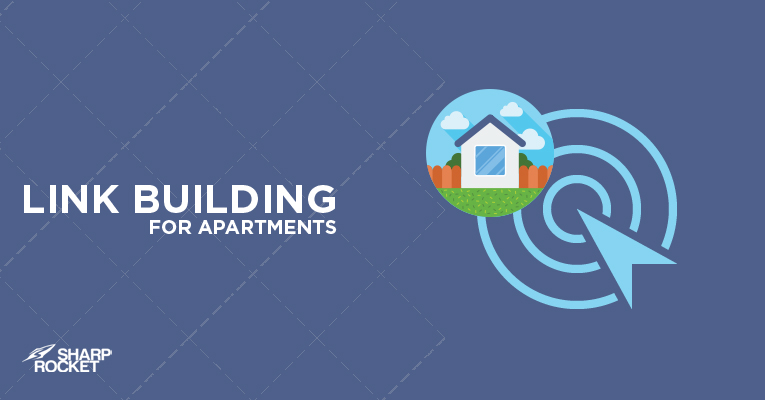
In this post, we'll focus on how you can capitalize on effective link building techniques for apartment websites.
GET RESOURCE LINKS FROM SUMMER/OFF-CAMPUS HOUSING CITY PAGES
This is my first in the list given that there are bulk opportunities in this link market. Basically, summer housing/off-campus housing pages are resource lists of available housing options for both students and interns in a local area.
Edu websites have these valuable pages for current and potential students with links to trusted apartment sites.
If you are hyper-local at this stage, building inbound links from this type of resource page benefits your site from a relevance signal.
National apartment sites with available cities catering to clients can also take advantage of summer housing links pages.
You can find off-campus housing city pages from Google search using any of these search phrases below:
- site:.edu "Off-campus” housing [CITY] “resources"
- site:.edu "Student housing” [CITY] “resources"
- site:.edu "Internship housing” [CITY] “resources"
- site:.edu "On-campus” housing" [CITY] “resources"
- site:.edu "residential" "housing resources" [CITY]
- site:.edu area rental websites [CITY]
- "Off-campus” housing [CITY] “resources"
- "Student housing” [CITY] “resources"
- "Internship housing” [CITY] “resources"
- "On-campus” housing" [CITY] “resources"
- "residential" "housing resources" [CITY]
Make a list of qualified housing city pages in a spreadsheet along with appropriate contact details. You can check out this guide on finding email addresses on websites.
Furthermore, if you want to collect more link opportunities, you may run some of the links pages through LinkMiner to find if there are any broken apartment sites.
A plug to this favorite link checker tool can help find any broken domains or links. It also provides the number of unique referring domains for each external link (see image below)
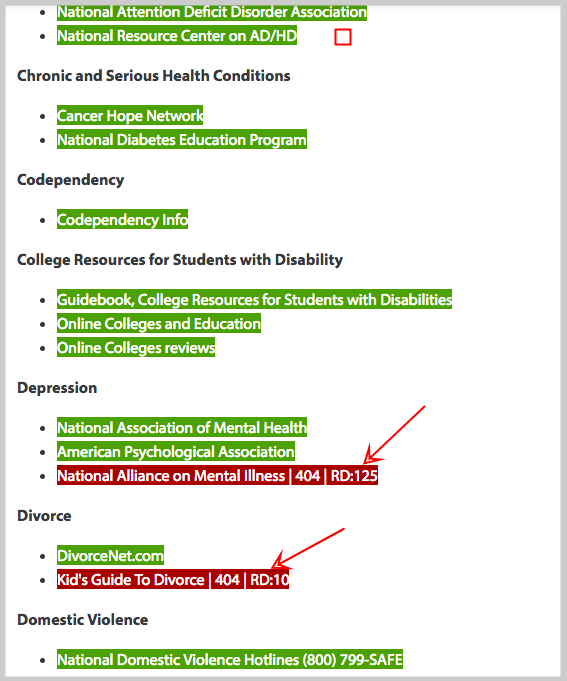
Here is an apartment site that hasn't been existent for years, but has attracted a good number of referring domains (75+) including inbound links from .edu websites. It's a low-hanging fruit, if you may, that will give very quickly summer housing pages that can be added to your list of link opportunities.
Finally, craft a solid email copy to be sent to your local outreach prospects - summer housing pages. Then acquire a link if you properly do these initiatives.
LEVERAGE EMPLOYEE DISCOUNTS
University websites have their human resources sections available to their staff employees - which include benefits like discounted apartment services using coupons.
Having this in mind, you may search for any available perks program pages of university sites and try to acquire links through a simple discount code outreach.
Start your search using any of these keyphrases:
- [CITY] site:.edu "employee perks"
- [CITY] site:.edu "employee benefits"
- [CITY] site:.edu "employee discounts"
Collect all local link opportunities with contact information for each website.
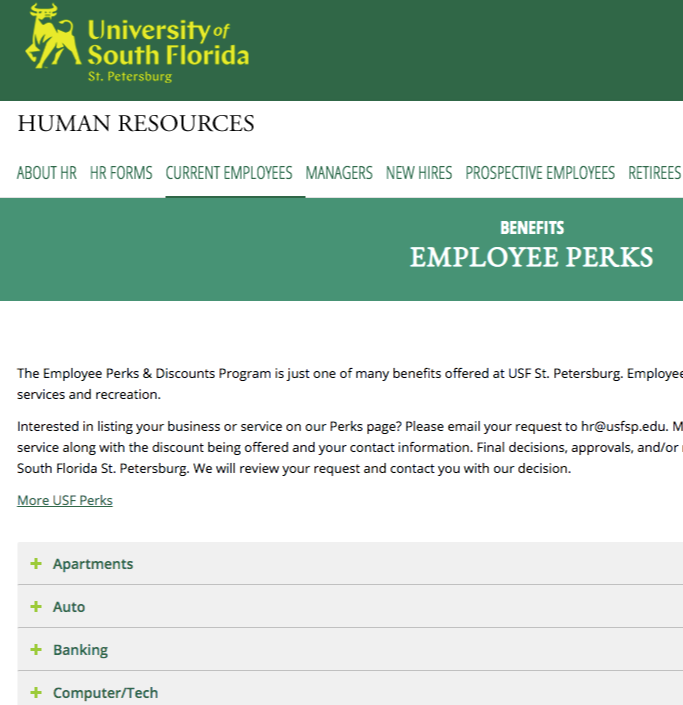
For outreach, you can use this email template below to acquire resource links from employee discount pages.
Subject: Employee Discount for [University Name] Employees
Hey [First Name],
I noticed that you have a list of businesses offering employee discounts:
[employee discount page]
I just want to let you know that we are offering a [discount%] on all our [category] products exclusively for [University] employees.
They can also use this promo code [insert promo code] when they purchase on our online store.
Let me know if there’s any other information you would need from us.
Thanks, [First Name].
[Your Name]
MAXIMIZE VALUE-ADDED VISUAL CONTENT
Visual content pieces like infographics still work in 2019. The difference between an outreach campaign with optimal results and one that flopped in link performance can best be understood in any of these factors:
- Validity and credibility of data source
- Targeted audience's needs
- Contextual relevance of outreach emails (not just personalization)
Many times, link builders would try to produce several infographics at once, publish them on a blog and promote it massively to publishers. It doesn't work that rush.
There are visual content suited for a rental apartment industry like charts, maps and slideshow-type of piece.
A. CHARTS
B. MAPS
C. SLIDESHOW
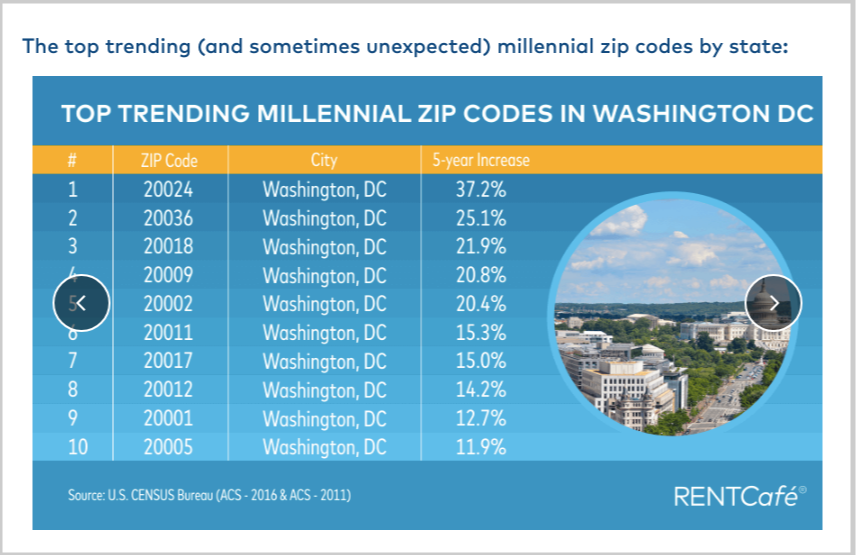
RENTCafe beautifully created visual content on a regular basis. This led them to acquire both authority manually-built and organic links for their apartment SEO campaign.
This type of content campaign may need strong buy-in from the management in case of marketing budget - but can surely bring return on investment if done correctly. If you are into doing link building for apartment sites, you're not just concerned with the quantity of deliverables, but of possible conversions brought from doing the linkable content campaign properly.
LINK BUILDING FOR APARTMENTS
Pursuing discount pages, summer housing city pages, and creating visual content pieces are some of the methods to get relevant authority links for apartment websites.
While there are other link building approaches, it can be discovered by looking at what top niche apartment publishers are doing in terms of content creation.
Link Building For Moving Companies
We've written a series of link building guides for different industries - from car rental, hotels, dentists, drug rehab centers, and even to a certain type of web properties like .edu websites.
Today, we look at how to get backlinks for moving companies. As you know, moving to a new place can be a stressful process, so individuals, families, and businesses today are hiring qualified movers to ensure their possessions are being handled properly.

If you own a moving company or have a client with a moving comparison site, this guide will help you find targeted content creation and link building tips.
INVEST IN CONTENT FORMATS SPECIFIC FOR MOVING CUSTOMERS
Understanding what content formats will resonate a specific group of audience can help you initiate the content creation process without apprehension. There is a good probability of gaining traction from a targeted audience if the content format given to them fits their content consumption needs.
Let me give you some examples of content formats that resonate well in the moving industry.
A. Checklist
People can forget things. A nice format of content to give to your moving customers is a good moving checklist.
However, it should not be just another checklist, but rather a very specific one for your audience and their location. Depending on your services, you may create checklists for any of these readers:
- People who are moving to a new house
- People who are moving to a new business center
- People who are moving house from CityA to CityB
For the latter, it is best to use some local city names if it is what your brand mostly targets. A Moving From Los Angeles to Seattle Checklist is a highly specific content. It may include tips and reminders that considers city location distance, best days and time to move (according to traffic), and other pertinent details for those two locations.
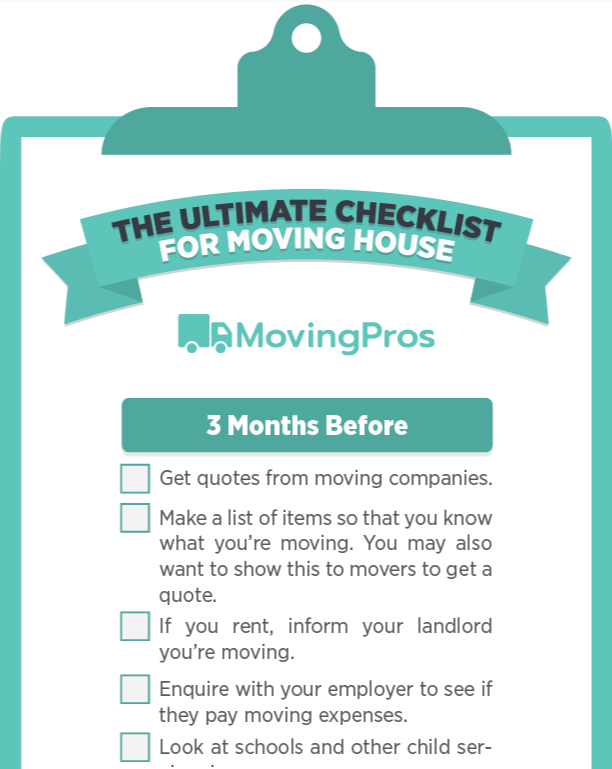
Most moving checklists you'll see that are published have preparation time frames at hand (8 weeks to go, 6 weeks to go…). The key point here is to ensure it is the most estimated week frame - does it actually take you 8 weeks to move from CityA to CityB? Having good research for these small details gives you an edge to how much value your content is to your target customers.
You can create a graphic design for the checklist so your readers can save it, bookmark, print, and bring it wherever they are.
B. 101 or Beginners’' Guide
In the search marketing community, there is a lot of beginners' guide content published everywhere. There are different versions of it such as Comprehensive, Definitive, Ultimate, or Complete guides. While you can do this similar approach on your moving blog, it may not resonate well in other industries.
In the moving niche, for example, you don't have to create your own guide that just curates all tips from different blogs on the topic - a Complete Guide on [TOPIC] will not make sense, as people have different needs and things to move. Complete Guides may be found to be incomplete by some people.
What resonates most is 101 type of content that gives information to people who are new to the scene. You will mostly find there's no advanced side of moving, unless an individual moves very frequently from one location to another, and then to another location.
You can create 101 guides or posts on any of these topics:
- packing
- moving across a COUNTRY
- rules and regulations for CITY
- taking furniture apart
- loading a bed
Packing 101
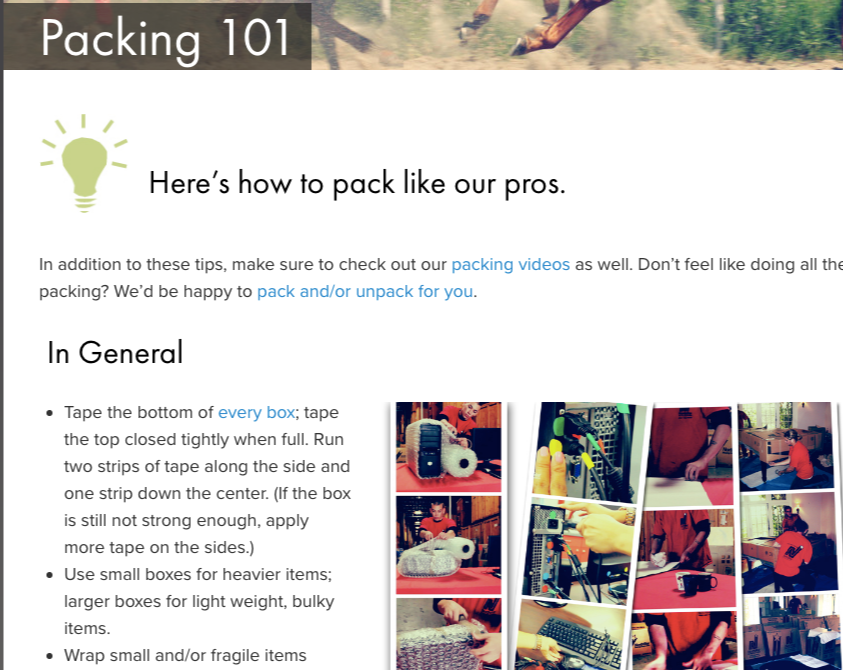
Move Calendar
C. Things to Do
You may tangentially create topics that can be of interest to your target audience. Examples of these are things to do topics. It may not be solely for moving customers, but for people who are interested in travel that might compose a portion of your customer audience in the future.
Here are a few things to do topics that can generate traffic to your blog:
- things to do in [city]
- things to do in [state]
- things to do in [city] this weekend
- things to do in [state] this weekend
- fun things to do in [place]
- free things to do in [place]
D. Questions
Another format to create in content is question kind that people are asking for. So, if you can determine popular queries that your demographical audience is looking for, you may not be running out of content opportunities.
Address these questions on your blog and get a good portion of traffic to your blog. Here are some topics you may find worth discussing:
- where to buy moving boxes
- what do I need for moving day?
- what happens when a moving company breaks my furniture?
- how do moving companies ensure that your stuff is safe?
- how to pack for moving
- how much does a moving company cost? (for moving comparison site)
- how to pack clothes for moving
- how to pack books for moving?
- how to pack a tv for moving
- how to stay in the same school after moving
To find more moving-related questions to write posts about, you can use Ahrefs' Keyword Explorer, search for any moving phrases. Then filter keyphrases to only Questions.
TAP LINKABLE AUDIENCES
I'm a big fan of Garett French's linkable audiences (there is no doubt with that). If you're not yet familiar with linkable audiences, basically these linkable audiences are proven to have the intent of linking to a website from their webpages. Therefore, creating content for them increases the probability that the content we produce can acquire high-quality links.

For example, you can tap job seekers who are working in a city or country you're targeting as a brand. Here is a good example of a moving comparison site doing well with this type of targeting.
Work in NZ: Jobs in the Fastest Growing Industries in New Zealand

Another linkable audience that is receptive for linking are environmentalists or people in the nature space ("going green"). You can publish content assets that value green thinking.
Going Green
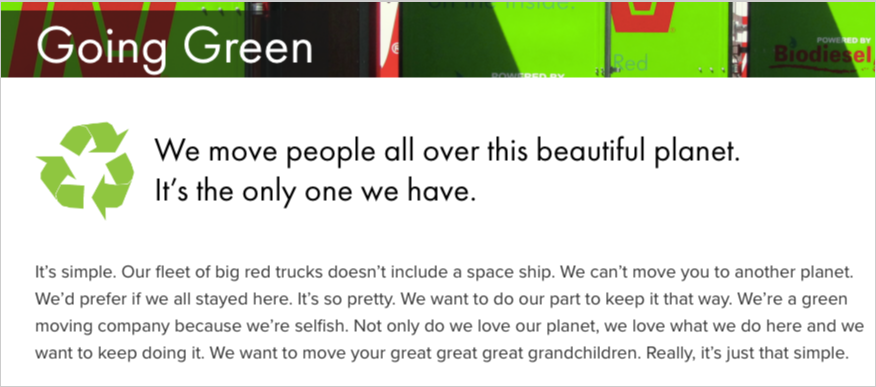
LINK BUILDING FOR MOVING COMPANIES
There are a lot of other ways to build high-quality backlinks for a moving site aside from what was mentioned in this post. Invest time in checking backlink profiles of top competitors and see where they get most of their inbound links.
Being listed on popular directories like Yelp and Merchant Circle still holds great weight in relevant inbound linking, but don't let your efforts stop there. Find other creative means to get the ball rolling in link building.
Seasonal and Holiday Link Building Campaigns
Seasonal link building campaigns can serve as a massive traffic driver for one's business.
Holidays, celebrations, and other special calendar events, if leveraged properly, can help acquire relevant links for a website.
However, given that many businesses are also vouching for the same opportunity to maximize seasons for their sites' link building opportunities, how do you ensure you're on top of what they do and are maximizing what's out in the market?
Today, we'll cover tips to effectively execute seasonal link building campaigns — some of which may include some tweaking in your own processes.
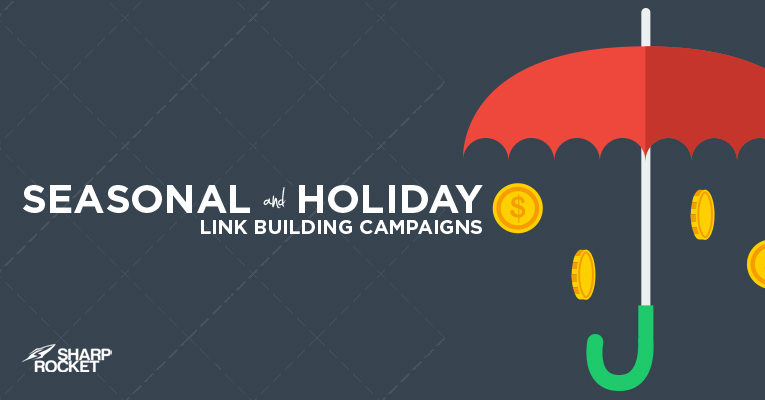
TAKE ADVANTAGE OF SEASONAL EVENTS, NOT JUST HOLIDAYS
It is important to think beyond just special holidays like Christmas and Valentine’s day. There are a lot of seasonal events that will be more directly relevant to your target audience. These seasonal events include the following:
- Back to school days (for students)
- High school students choosing their college courses
- ISA deadlines
- Your country's annual festivals
- Summertime activities (landscaping, gardening, etc..)
- Business' and professionals' tax season
- Starting or renewal of businesses' permits in January
- Allocation of budgeting for businesses
- Cyber Monday deals
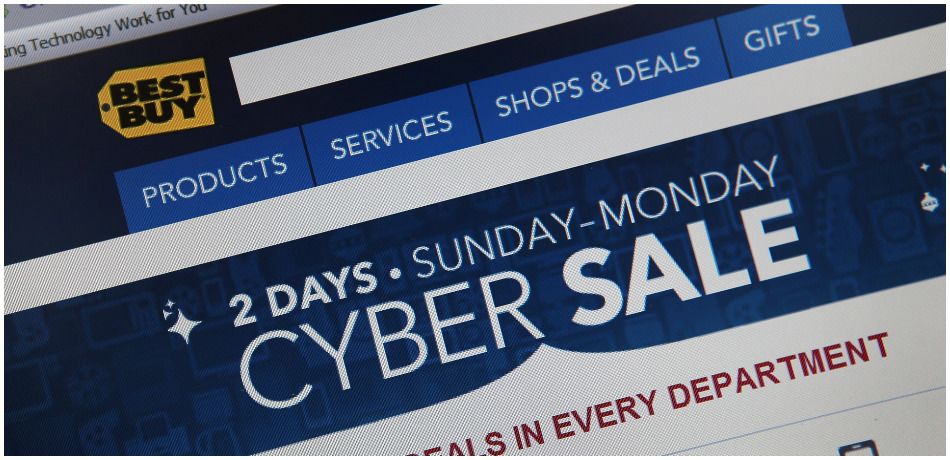
You can make a list of all seasonal events in your industry and select the ones that fit your brand.
Once you have chosen an event to focus your seasonal link building campaign on, you can follow this basic process.
Step 1: Create a hubpage for seasonal resources
A good recommendation for a seasonal link building campaign is to consolidate your all various pages or resources into one hub —by making a category.
Instead of creating individual pages with URLs like domain.com/seasonal-product-page/, domain.com/seasonal-buy-gift-guide/ and domain.com/seasonal-special-offer/, you can start with a category domain.com/season/, then structure other pages under this category, for example:
- domain.com/season/special-offer/
- domain.com/season/product-page/
- domain.com/season/buy-gift-guide/
As you move closer to the period or date of the season, you now have available pages for promotion.
Step 2: Get initial links approaching the event
The velocity of link acquisition plays a big part in how your pages will rank for seasonal terms. If you can start early in the process of building links to your category page, you'll send a signal to Google that there are a lot of people vouching for your website.
You would have a better chance to do this if you collect a list of bloggers and webmasters in sub-niches that you can easily contact for early promotion.
Do a quick analysis of your website to identify any internal link opportunities that might help your seasonal pages get some link juice in the pre-seasonal event stage.
Step 3: Setup exposure for your seasonal hubpage
You can add exposure to your seasonal event and refer visitors to the hubpage by making some changes on your homepage.
A link into the main navigation pointing to your seasonal hubpage or putting a featured box on your homepage highlighting your seasonal event page are some ways to bring awareness to your regular and non-regular visitors about your campaign.
Step 4: Assess your campaign
The campaign might suppose to end at the date of the season, but there'll be a lot of link opportunities still coming in as a result of the promotion you've done throughout the period. Use Monitor Backlinks and Ahrefs Alerts feature to find those unlinked and linked mentions that relate to any of your seasonal page. See this link reclamation guide.
This entire process may require proper planning and strategy, so make sure to set a timeline for the whole campaign. Set back-up plans for any delays of execution in any part of the process. For example, you may find that designing individual pages and publishing them may entail some technical difficulties on the part of your web development team — having a week or two week allowance is a good recommendation.
The next points are details to take advantage of seasonal events — specific techniques in a seasonal link building campaign.
PUBLISH THEMED BLOG POSTS FOR SEASONAL EVENTS
On your blog, you can publish articles themed for seasonal events. These blog posts are targeted to specific customer personas. For example, you can write posts about preparation tips busy moms need to do early on for their kids going to school.
You can use Buzzsumo to find content topics that will be relevant to any of your preferred seasonal events.
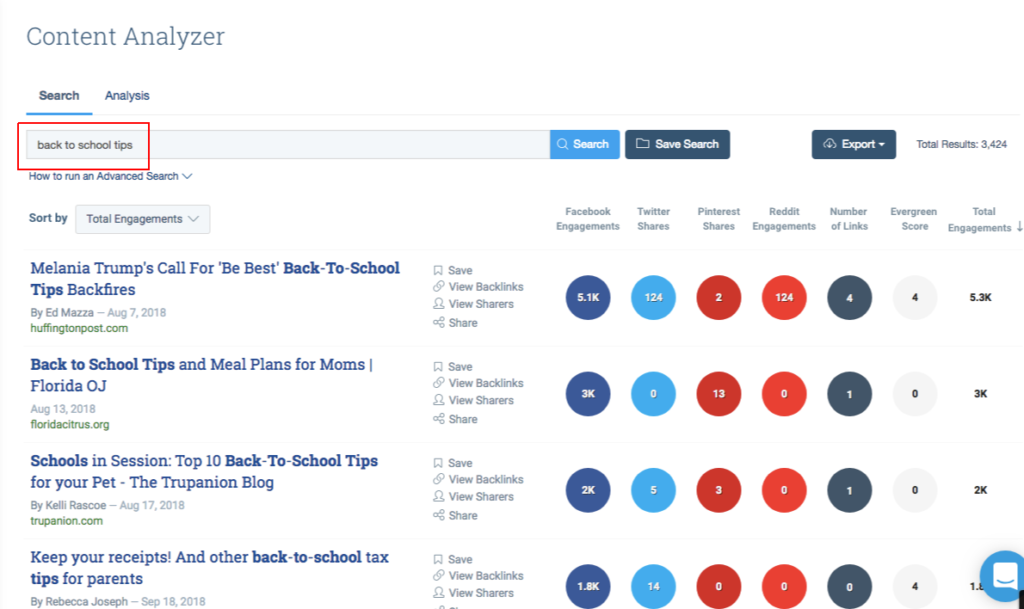
Those blog posts can interlink to each other and individually link out to seasonal pages you've created. Maximize the internal link opportunity as much as possible.
LEVERAGE HOLIDAY EDITION PRODUCTS FOR UNLINKED MENTIONS
You can mostly find holiday editions of products a month or weeks before the special event. While this gets the most attention in the market in terms of purchase, there is a good chance you can also leverage these items for link acquisition.
There are unlinked mentions of holiday edition products (e.g. knit Christmas sweaters) you may have overlooked if you're not aware of them. Discover those mentions using BrandMentions or Ahrefs Alerts tools, go over their contact details, and reach out to reclaim those links.
GIVE GIFTS TO INDUSTRY PARTNERS
Holidays and seasonal events are best times to do traditional initiatives like direct email outreach or giving gifts to company partners and content publishers. The expectancy of receiving times at particular seasonal dates is normal and would result in any natural mentions.
Here is a good post by James Norquay that shows how effective this traditional method is in gaining organic links for a website.
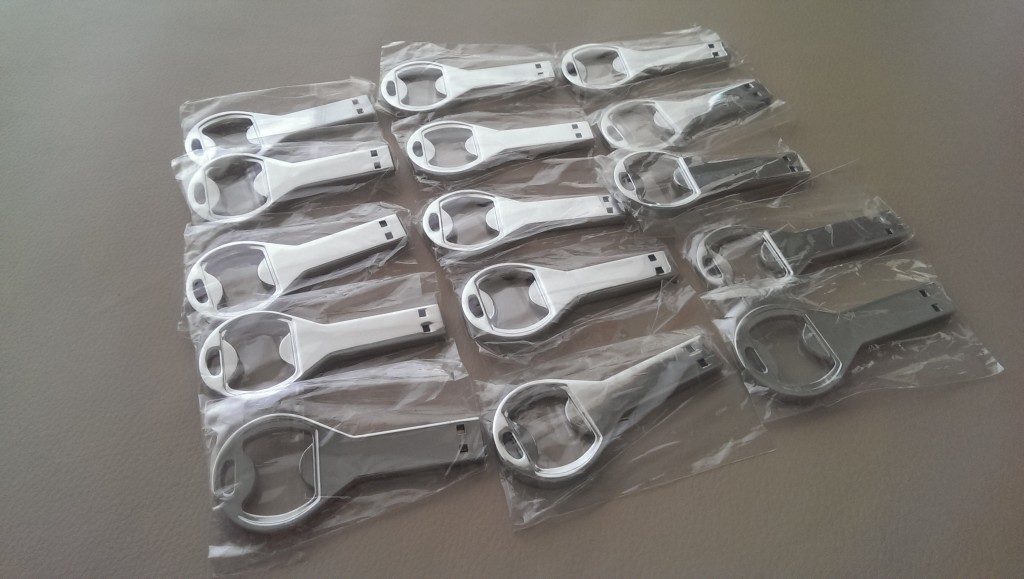
AHEAD OF THE SEASON
The process and basic techniques to apply an effective seasonal link building campaign require a good resource allocation strategy. If you can place resources (content pages, outreach list, tangible content) ahead of the season date, you can focus more of your efforts on the outreach side of the campaign.
How to Run a Sustainable Link Building Campaign
Links remain to be a ranking factor in 2019 and still going strong.
No doubt that people who invest their time, money, and resources to put a link building strategy in action will do experience a greater gap in the search competition.
However, one should highly consider the sustainability of the campaign.
Personally, I don't believe much with short-term thinking in link building — like a season to start and stop. Given the strength of competition in any industry where any upcoming brand can dive into the game and start dominating through a solid link acquisition campaign, it is unwise to think short-term.
So, how can you sustain your link building campaign? How can you ensure that you're producing the right types of links for your website? Can you guarantee consistency of production in link building?
1. ALIGNMENT OF ONLINE AUDIENCE
One important factor to scale and sustain your link building campaign is to understand your audience online. Not every business has available high authority links that can match to their targets. So if you're thinking of only qualifying link prospects that are DA70 and above, you are limiting your opportunities.
The way to assess a good range of metrics is to do a quick reverse engineering of your competitors, even most the top ones in your space. Check the average DAs of their linking domains, and set a good range of metrics that correspond to the market you're in.
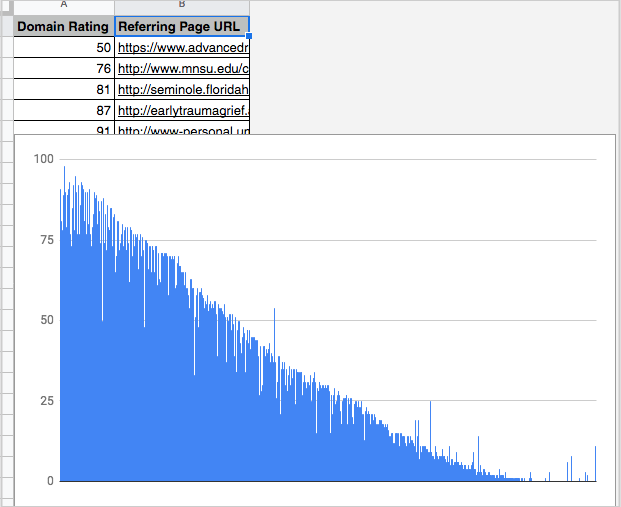
By doing that, you now have a good benchmark of metrics that fit your audience market and not a generic standard metric range for all industries - because again, every industry's link environment is different.
When you go through your research, start asking, are there enough publications in my space that regularly produces content primarily targeting my audience? What are their average metrics (Moz' DA, Ahrefs' DR)?
2. LINKING PARTNERS
Not only finding a good range of qualifiers for your link metrics, but also searching for a list of regular linking partners. This would sustain your link acquisition process, as you are able to build links from the same referring domains.
Of course, the idea of only choosing the right linking partners based on their capacity to drive readers to your blog and/or to bring potential customers to your business is a must. But more than that, you seek for a good number of linking partners (potentially 5 to 10) where your brand will regularly contribute content with contextual links pointing to your content assets.
Strong relationships with industry content publishers would help you sustain a link acquisition process for your site.
You can go over to starting low-authority blogs in your niche. By partnership, you're seeking not just high-authority blogs, especially in a tightly-audience setup where you can't seek much quantity of publications.
3. CONTENT RESOURCES
This part that is mostly overlooked by business owners is just concerned about the investment budget (monthly) for a link building campaign.
Spreading out your budget for a series of months to get a consistent number of links from an agency or your in-house link building team is good, but look into how you can also maximize existing resources you've produced on your blog.
Are there any formats your content pieces haven't turned into? Visual to video? Text to video? A few of the resources you do have can be maxed out to be distributed on platforms that can help your brand be more visible in your online community.
4. SPEEDING UP PROCESSES
One of the primary concerns of any agency and business owner in executing link building campaigns is the cost of the entire activity - from content production to outreach overhead costs. Any of these things demand a price but can unknowingly be minimized if a good in-house team or agency can evaluate their own processes.
The process that is focused on results will produce more than a traditional process that strictly based on time period (i.e. two weeks link prospecting and two weeks outreach setup).
Can you use a consolidated platform in outreach that will give you a more streamlined process than using several spreadsheets for different clients? Spreadsheets for organizing link targets is efficient if it's been monitored regularly and protocols for adding inputs to the spreadsheets (link details and contact numbers) are the same for all link prospects and outreach specialists.
Another thing you can add to your process is fitting content pieces to linkable audiences. There are 601 audiences accumulated by Citation Labs. Depending on brand relevance, one can pursue as many audiences as possible as long as they are perceived as potential customers.
In tools, the conjunction of team members, a flow of tasks from one person to another, and any inclusive factors in the process need to be evaluated and re-evaluated to check gaps and fix them, close longer loops for faster results and
EXTERNAL AND INTERNAL
To expect sustainability of a link building campaign, you must look at the internal considerations (your link building team's processes, tools, resources) and external ones, such as available linkable audiences, a range of link metrics suitable in your audience market and a good grasp of potential linking partners in your space.
Every industry and every business is different. You must make due diligence in research for context and timing in your niche's link market.
Take Advantage of Podcasting for Link Opportunities
The number of podcast listeners grew by multiple folds from year 2014 to 2019 and will grow furthermore for the next three years.
With this demand, any brand today cannot simply overlook this popular form of media. There are a variety of industries where many podcasts are now flourishing, ranging from health, technology, and even link building.

Before jumping into the execution of the campaign, it's very important to know the "whys" before you can do properly your strategy.
There are a lot of reasons why a brand should integrate podcasting in their marketing plan. Here are a few of these reasons:
- Provides opportunities to directly connect to a target audience using the voice of a brand personality.
- Builds authority for subject matter experts and brand ambassadors that are value-driven and community-oriented
- Increases trust and confidence with prospective ideal customers
- Absorbs audience from the brand hosting the show (for a podcast guest)
- Helps acquire contextual links from websites hosting the podcasts
In podcasting, there are two approaches you can choose: either start or host a podcast show in your niche or become a guest for niche podcasts.
The first option requires different resources to begin a podcast show that is worth listening to. These may include budget for podcast tools, and contact lists for possible guests of the show.
If you're planning to start your own podcast, here are a few good resources I've found to be helpful:
Meanwhile, becoming a guest for niche podcasts is cost-efficient. Production of the podcast show is covered by the host; the guest would only need to prepare for the interview and promote the output audio content to his followers.
However, there is still some legwork one has to be prepared for.
PROSPECTING FOR BLOGS HOSTING PODCASTS
Finding a podcast where you'll become a guest is crucial as you don't want to be associated with any communities that aren't aligned with your brand goals.
If you're in the cooking niche and are reaching out to a podcast host that guests any subject matter experts from different industries, you are deviating from the true value of podcast guesting - getting more visibility and brand awareness for your target customers.
You've got to find hosting podcasts that are within your industry and/or targeting your audience.
There are many platforms where you can find enough podcast shows. A few of the popular ones are listed below:
iTunes
A Google-like related search in iTunes can help you discover categorized podcasts. Given that iTunes has strict approval guidelines for audio content shows, you'll be able to ensure that some industry podcasts located in it are worth reaching out to.
Google Search
You can use an advanced search operator: inurl to quickly find podcasts related in your niche.
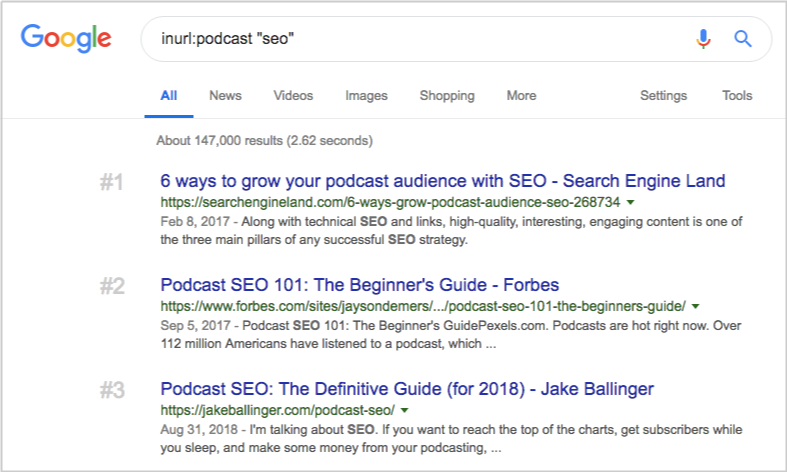
Podcast Directories
You may also find podcast directories valuable in expanding your search for niche podcasts. Be sure to check podcasts if they have regular shows and have a substantial number of subscribers/audience. A few directories that are worth using for your research are:
ORGANIZING YOUR LIST
When doing a research, it is best to have a spreadsheet at hand so you can collect the details of the podcast, which include the name of the show and host, and contact information (i.e. contact form on the website).
You also have to make a note if the podcast has entertained guests in its show, which gives you an idea if it's worth pitching to.
If the website hosting the podcast specifies an estimated number of listeners, you can include this small detail in your Remarks column.
Remember to find contact information of the podcast, preferably contact details of the person hosting it.
CHOOSING A PODCAST SHOW TO PITCH AS A GUEST
Identifying which podcast you want to become a guest for interview certainly depends on factors you'll personally consider.
Besides relevance of the podcast to your brand which should be the topmost priority, you should consider other factors (primarily link building factors).
The hosting blog or website of the podcast. For link building purposes, podcast shows should be published on the hosting website with links to external sources.
Wide range of topics being covered on the show. Topics that are too narrow or too broad may be misfit to your branding.
Visible promotion for the show. You can easily check how they market their podcast episodes by looking at the hosting website. Do they have links to social media websites, references and websites of guests either below their audio files or embedded on transcripts?
Quantity of influence on social and email subscribers. These factors may require efforts to discover, but if they've been checked can help you prioritize highly influenced podcast shows.
PITCHING TO BECOME AN INTERVIEW GUEST
The best way to approach the host of a podcast is to first ask yourself value you can give to their audience.
Value includes your industry expertise and credibility that can definitely bring substance to the show. You may indicate the list of specific topics (not more than three) that you want to cover.
Another value may include your own set of influence, a good array of email subscribers and social followers readily available to promote their podcast show.
These details can be highlighted in your outreach pitch to make it more appealing to host recipients and to increase the chances of becoming a interview guest.
Here is a sample outreach email template from SEJ"s post on podcasting:
Hey there, Danny
I love the new brand image for Search Engine Nerds! I was recently listening to Loren Baker on his link building strategies and noticed he gave me a shout out. Thanks! Would you be interested in featuring me in an upcoming podcast?
Here are some topic ideas:
How to Conduct a Technical SEO Audit
How to Perform a Content Audit
How to do SEO for a Podcast
I’d be happy to send additional topics. I would really love an opportunity to work together.
Please email me back if you’re interested in collaborating. Thanks, Danny!
Warmly,
Anna Banana
PROMOTING A GUESTED PODCAST SHOW
It's not just enough to become a guest on the show and wait for the hosting party to promote it by themselves.
Take considerable effort to promote it your way. You may, for example, repurpose the podcast episode (audio file) into other content markets. You can write about the experience, include additional insights and experiences and publish it as your own blog post.
Share the audio output in your social networks, email subscribers and followers.
TAKE ADVANTAGE
In thinking of a new link building strategy for your client or your website, it's important to be aware of industry trends and in digital marketing, in general. When you take advantage of huge jumps in opportunities, it' would help you scale manually-built links and organic backlinks for your website.
